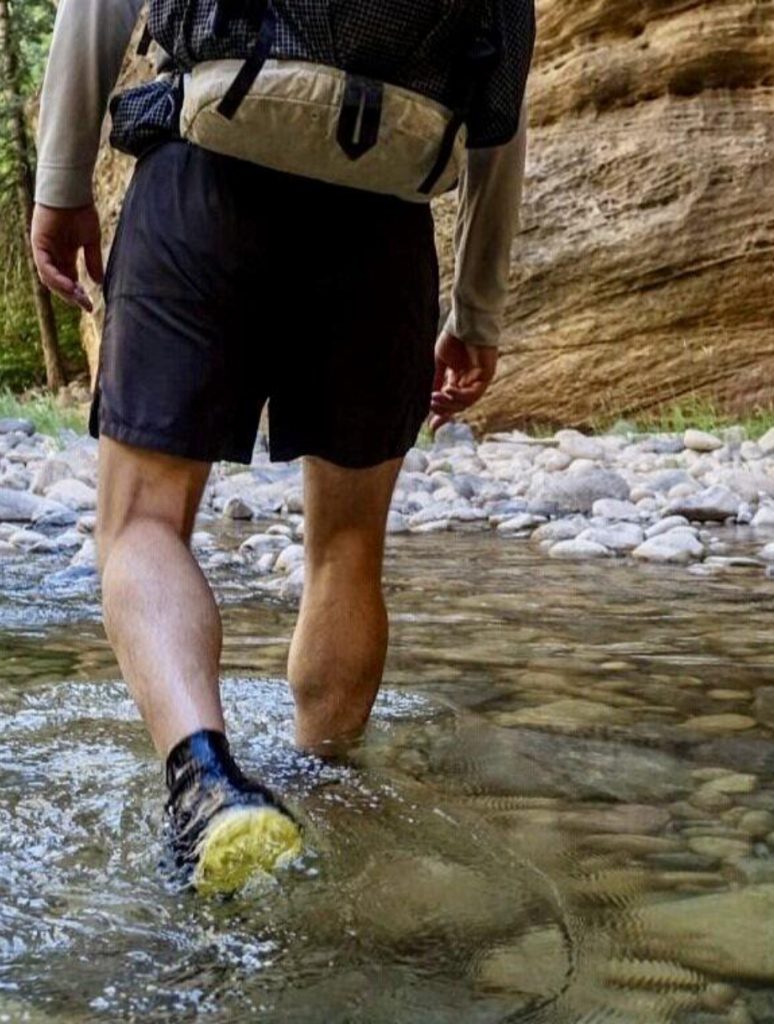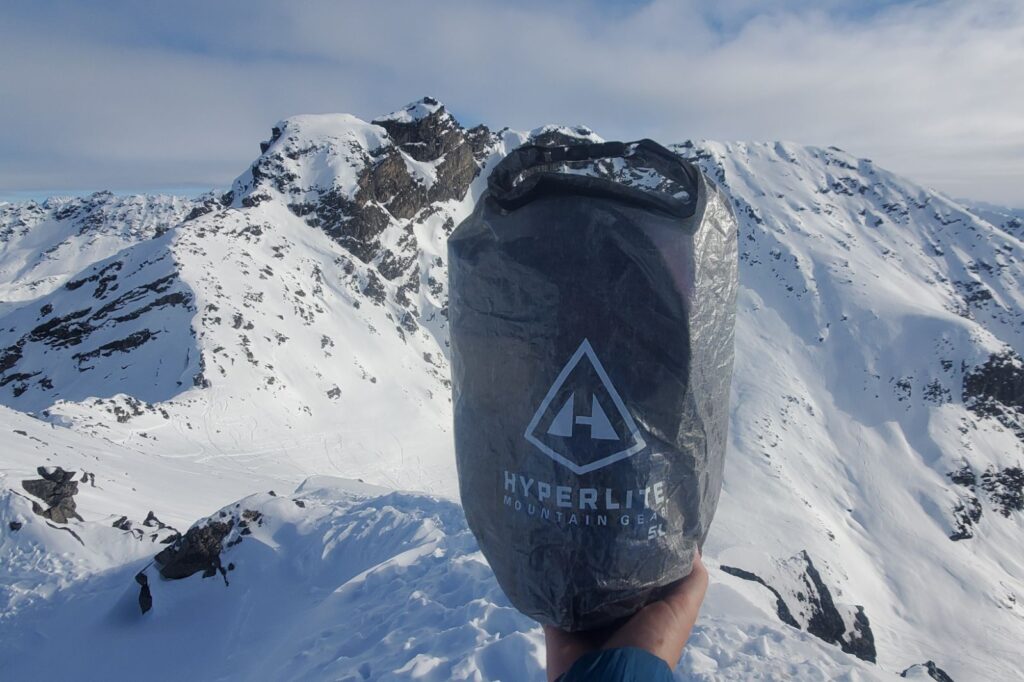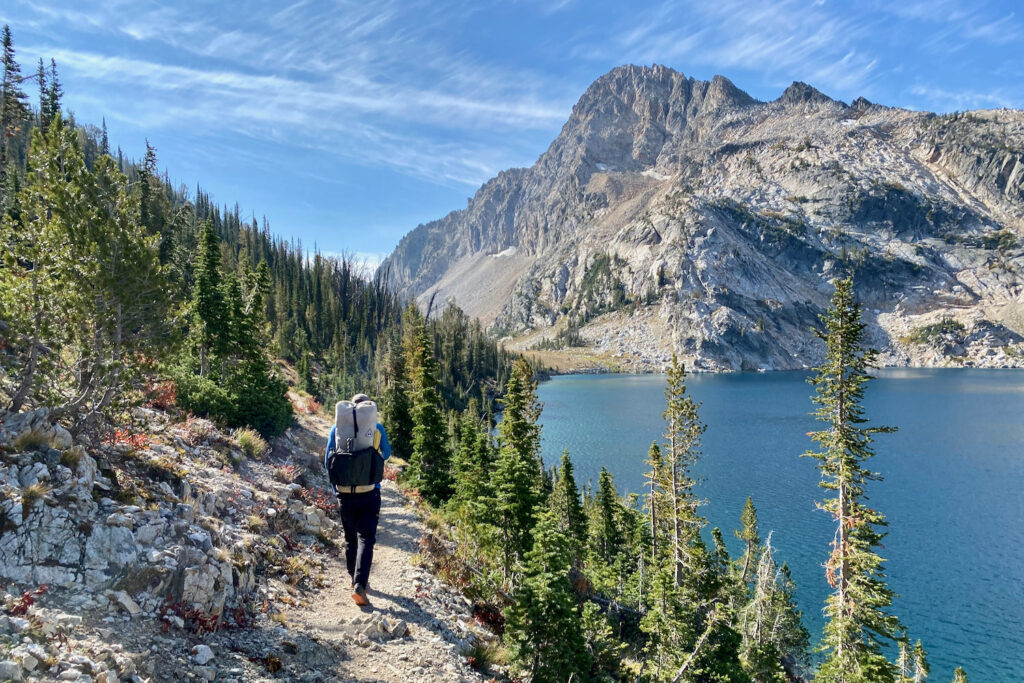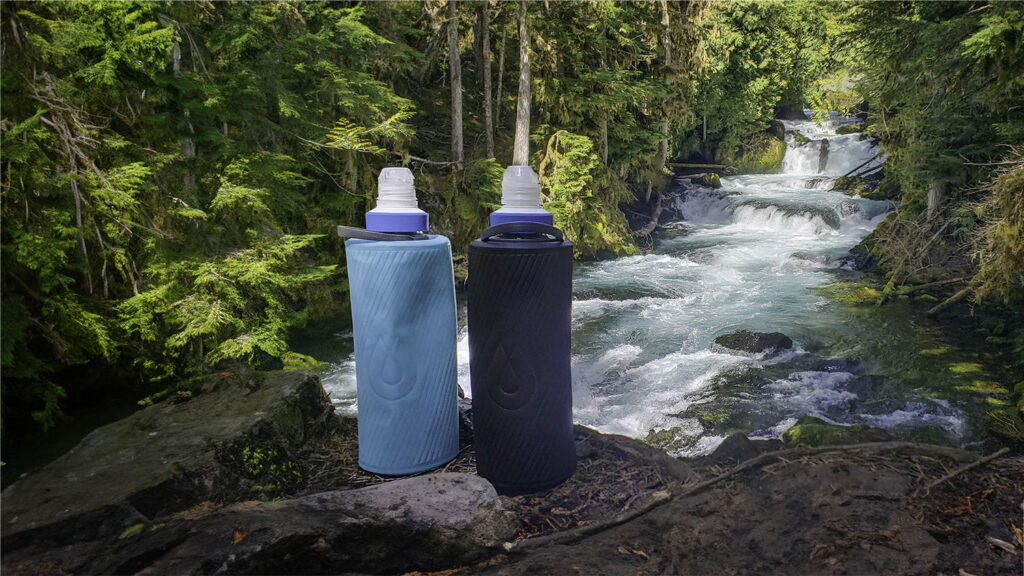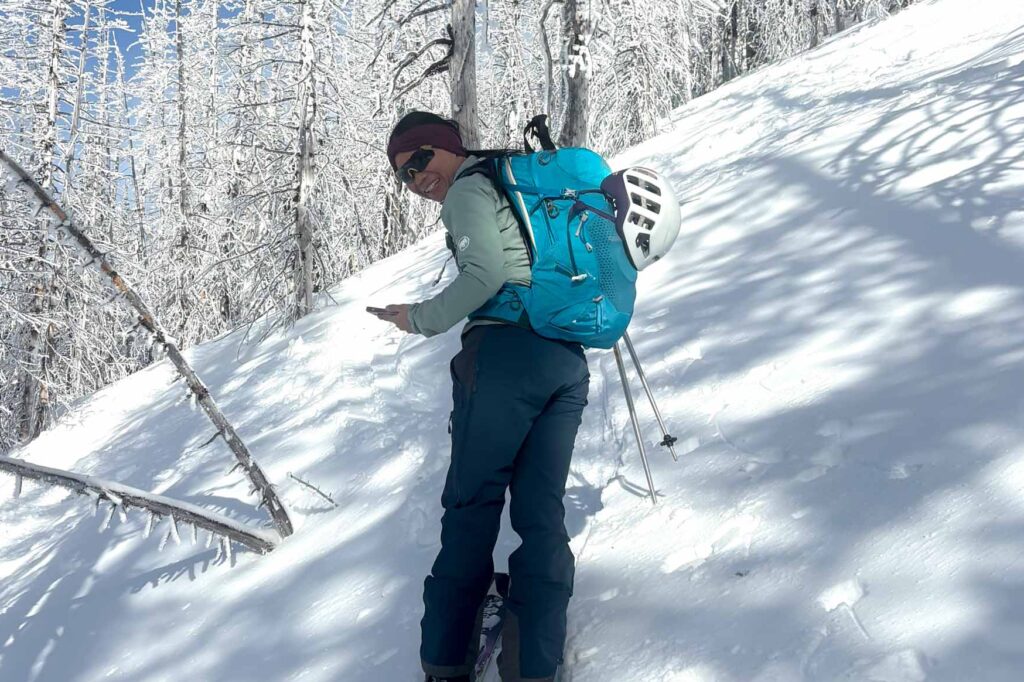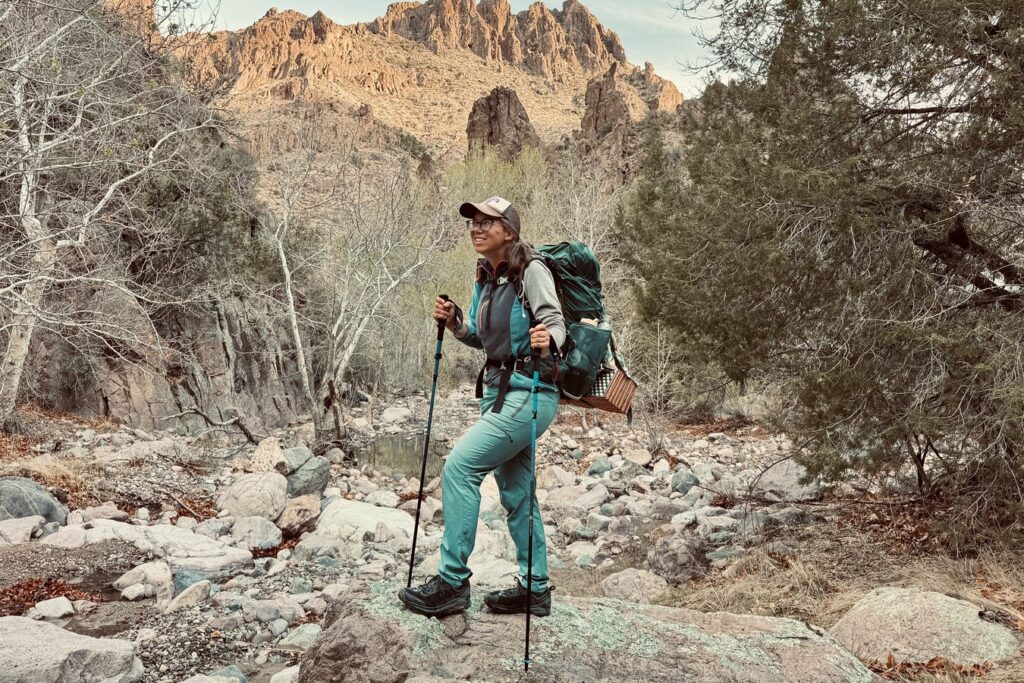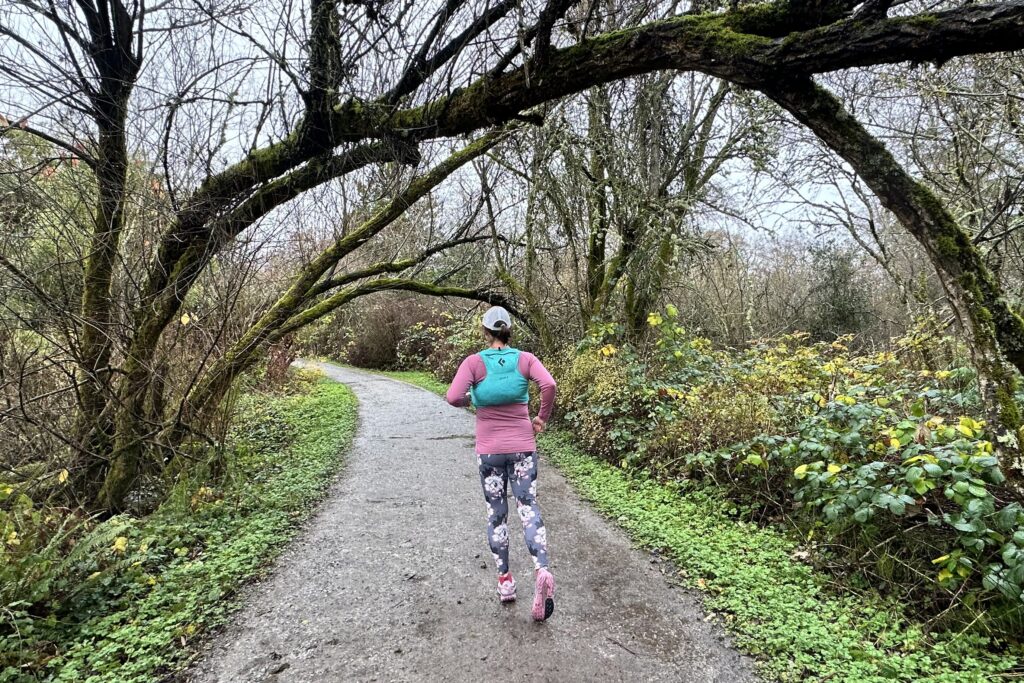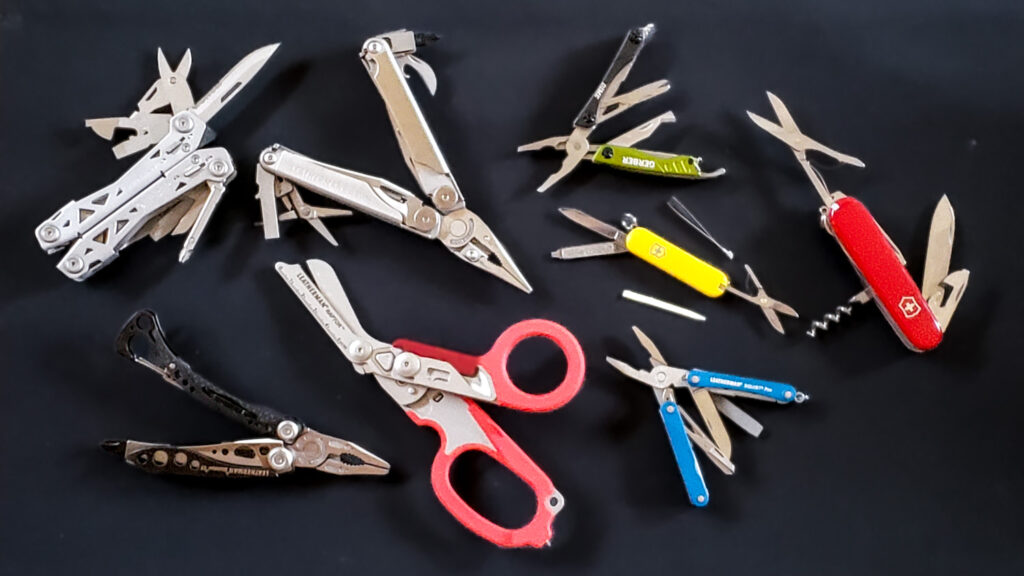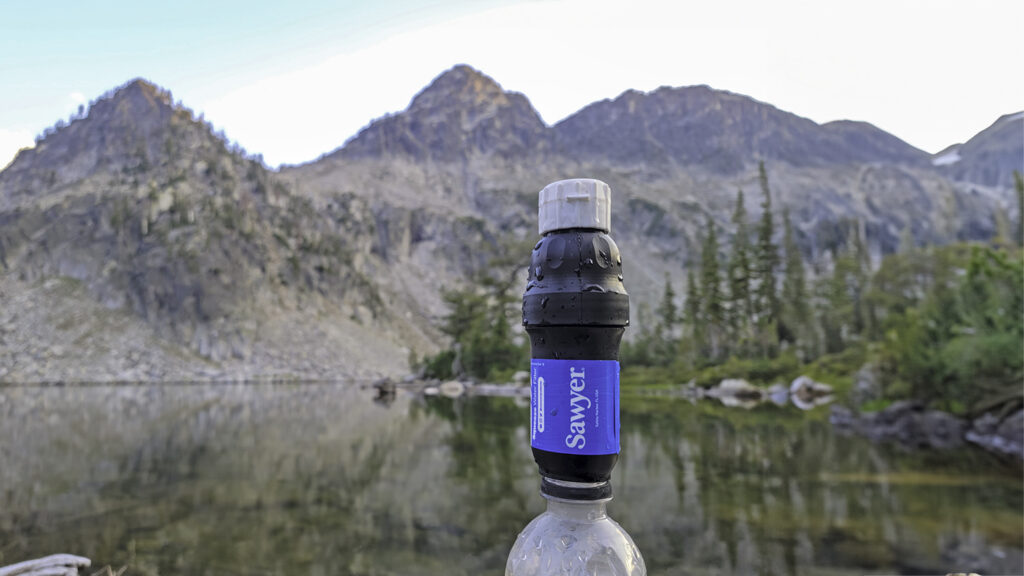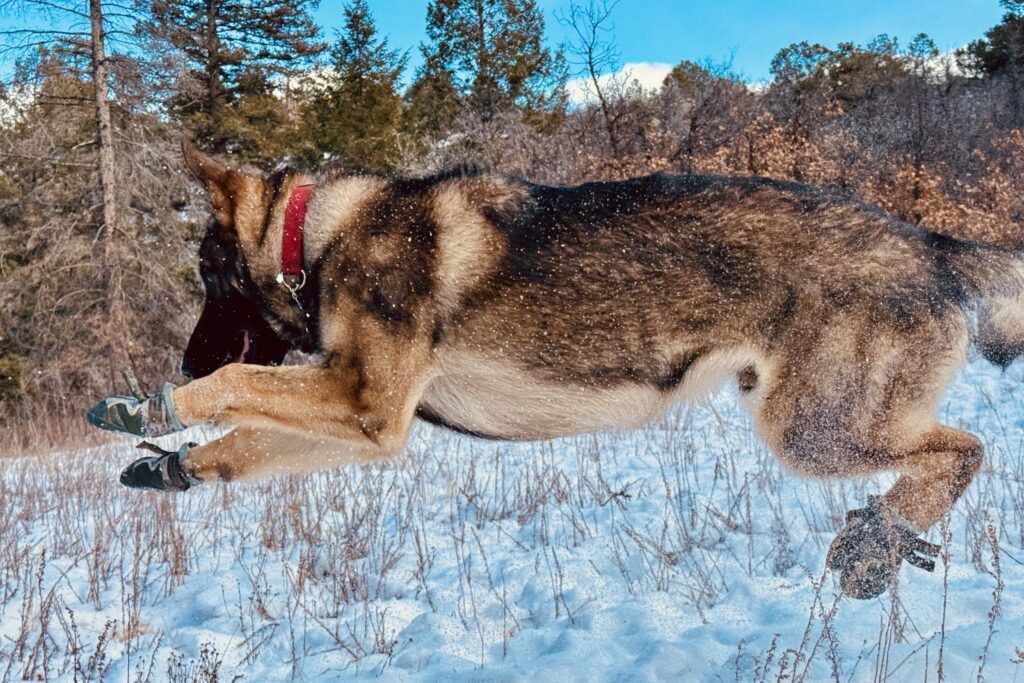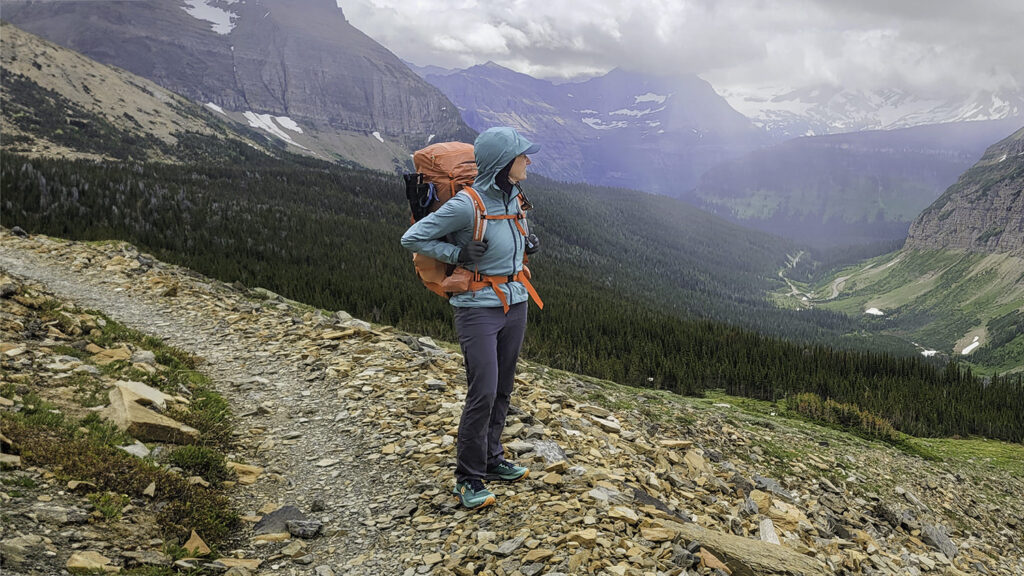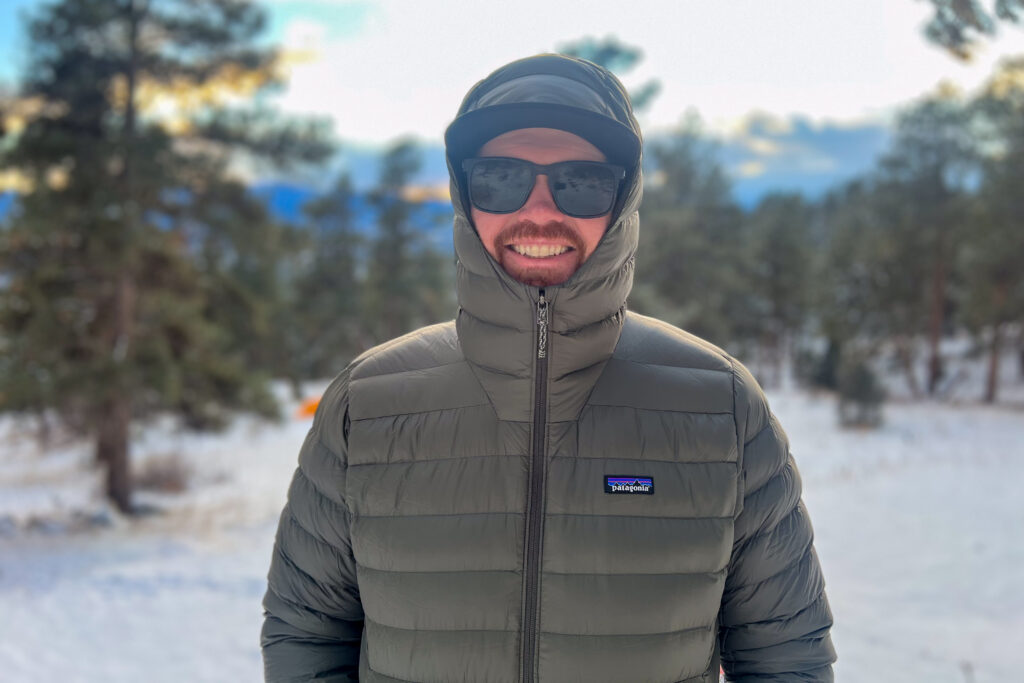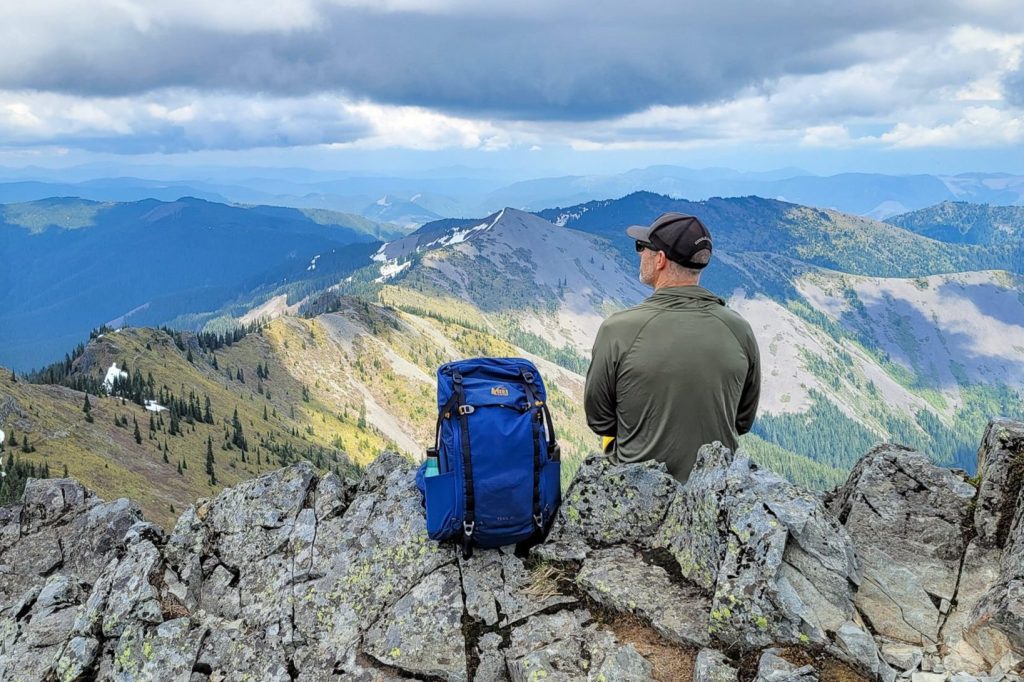
Choosing the right daypack is key to staying comfortable and organized on the trail. Our expert team, with testers based across the United States, researched 49 top-rated packs before narrowing the field to the 12 best-performing daypacks of 2025. We put our favorites through hundreds of miles of hiking, climbing, biking, and paddling to compare their comfort, capacity, weight, durability, and overall usability. Rooted in our first-person testing and side-by-side comparisons, this gear guide should help you find a daypack that’s a perfect fit for your next adventure.
And for more info, check out some of our other popular gear guides:
Quick Picks for DayPacks
Check out this quick list of the best daypacks or continue scrolling to see our full list of favorites with in-depth reviews.
Best Daypack Overall: Osprey Tempest 22 Women’s ($170) / Osprey Talon 22 Men’s ($170)
Best Technical Daypack: EXPED Skyline 20 ($150)
Best Minimalist Daypack: REI Flash 22 ($60)
Most Versatile Daypack: Women’s Deuter Speed Lite Pro SL 23 ($130) / Men’s Deuter Speed Lite Pro 25 ($130)
Best Hydration Daypack: Gregory Citro 24 H2O Men’s ($170) / Juno 24 H20 Women’s ($170)
Budget Daypack with Urban Design: Osprey Daylite Plus 20 ($75)
Best Compressible Daypack: LL Bean Stowaway 22 ($65)
Best Feature-Forward Pack with Larger Capacity: Rab Protium 27 ($180)
Comfortable & Well-Ventilated Backpack for Long Days: Gregory Zulu 30 ($170)
Versatile Ultralight Backpack: Cotopaxi Batac 16L ($65)
Roomy Daypack for Travel & Long Hikes: REI Trail 25 ($100)
Solid Budget Backpack: Decathlon Quechua MH100 ($50)
Best Ultralight Daypack with a Large Capacity: Six Moon Designs Wy’east ($185)
Supportive & Well-Ventilated Daypack for Long Hikes: Osprey Stratos 24 Men’s ($180) / Sirrus 24 Women’s ($180)
What’s new
The CleverHiker team has been trying out some new daypacks, as well as revisiting model updates and long-time favorites on our list.
- Osprey still comes out on top, but the EXPED Skyline 20 made its debut on our list in second place – and nearly took the cake.
- Updated, feature-forward Deuter Speedlite Pro 25 shook up the standings with its versatile design.
- The Batac 16 from fan-favorite Cotopaxi fills a niche for affordable, stashable daypacks with unique style.
- Decathlon – known worldwide as an affordable outdoor brand – is relatively new to the US scene. We snagged their entry-level Quechua MH100 20 daypack to see what the buzz is about.
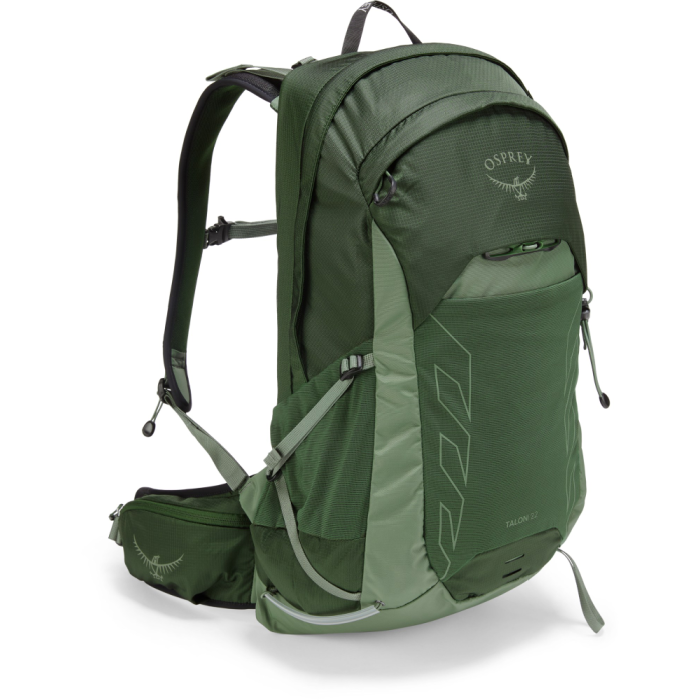
Osprey Talon 22 / Tempest 22
Best Daypack Overall
CleverHiker Rating: 4.8/5.0
Price: $160
Weight: 2 lb. 1 oz. / 1 lb. 14.6 oz.
Capacity: 22 L / 22 L
Frame: Internal framesheet
Pros
- Comfortable hip belt and shoulder straps
- Padded and ventilated back panel
- Supportive frame
- Good organization
- Large, convenient main compartment opening
- Durable material
- External hydration sleeve
- Inclusive sizing
Cons
- A bit expensive
- On the heavier side
- Hydration sleeve is narrow
The Osprey Talon 22 (men’s) and Tempest 22 (women’s) win our best daypacks overall, thanks to their exceptional comfort and versatility. With padded shoulder straps, ventilated back panels, and wide, cushy hipbelts, these packs conform nicely to the body. The adjustable torso harness makes it possible to create a customizable fit for most body shapes and sizes. They offer a robust but slightly flexible framesheet, so they ride comfortably whether fully loaded or carrying just a few items.
The Talon and Tempest are suitable for a wide array of activities. They have tons of convenient storage compartments to keep you organized for a full-day hiking adventure. The two large hipbelt pockets are big enough to fit a phone or snack. We found the water bottle holders are a bit tight for larger bottles, but they are easily accessible with the pack on. We also appreciate the helmet attachment clip for thoughtful storage when biking around town or climbing in sketchy areas.
That said, these bags are a bit on the heavy side, and they’re a little bulky for their size, which may miss the mark for casual hikes and folks who prefer ultralight and minimalist setups. The external pockets and brain pockets can also encroach on the bag’s internal space when they’re full, which can make it a bit cumbersome to access gear in the main storage pocket.
Osprey doesn’t skimp on any features when it comes to the Talon and Tempest – there’s a pocket, strap, and zipper for almost any adjustment or storage you might want. These are premium, full-feature daypacks, and they have the price to match. They might not fit everyone’s budget. But we think they’re worth every penny if you’re after a do-it-all workhorse that can take you from the maples to the meeting room and last for years of rough use.

EXPED Skyline 20
Best Technical Daypack
CleverHiker Rating: 4.7/5.0
Price: $150
Weight: 1 lb. 11.9 oz.
Capacity: 20L
Frame: Polyethylene foam board
Pros
- Back ventilation
- Highly adjustable fit
- Comfort
- Intuitive organization
- External attachment points
- Includes rain cover
Cons
- Frame is not removable
- Main compartment lacks dividers
- Bungees & tiedowns may be confusing
- Does not include hydration reservoir
The EXPED Skyline 20L is a rugged, technical daypack that excels in hot-weather hiking and multi-sport adventures. Built with a combination mesh/frame back panel, it offers impressive ventilation without sacrificing support. The breathable back and wide mesh straps kept things cool and comfortable, even when fully loaded.
This pack is incredibly versatile, with well-placed attachment points and innovative organization that make it easy to strap on a fly fishing rod or stow trekking poles and extra gear. Dual stretch side pockets, a roomy top pocket, and an internal zippered mesh pouch keep essentials accessible. The hydration bladder sleeve is accessible from the outside, making refills easier. Small design touches (like velcro strap wraps, glow-in-the-dark zipper pulls, and a built-in rain cover) show EXPED’s attention to detail.
Despite all its technical features, the Skyline 20L doesn’t scream “gearhead.” Muted colors, clean lines, and removable/stashable straps lend a surprisingly sleek aesthetic for urban or travel use, and it can fit a small laptop in a pinch. The only real downside is the frame length—for shorter users or those with compact torsos, it may feel a bit long for uses like climbing or scrambling.
If you’re after something you can take from the forest to the farmer’s market—and everywhere in between—this one’s a standout.
More: Exped Skyline 20 Full Review
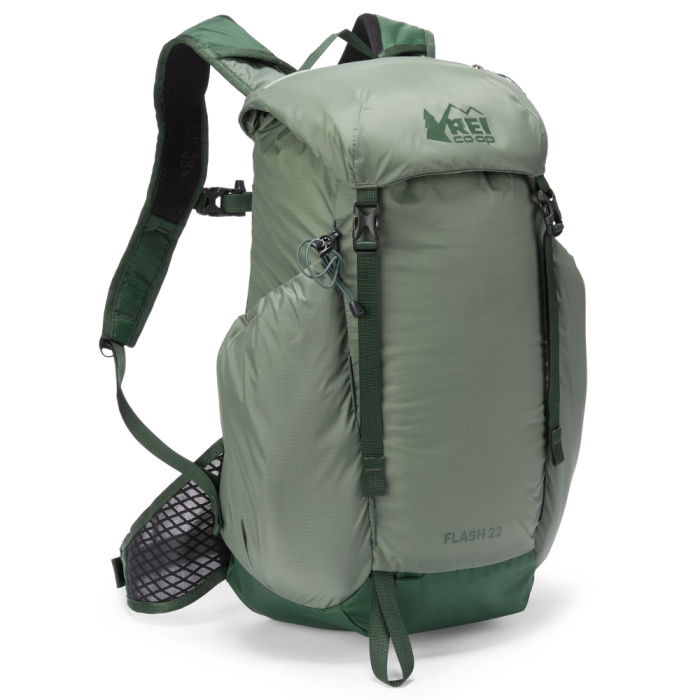
REI Flash 22
Best Minimalist Daypack
CleverHiker Rating: 4.7/5.0
Price: $60
Weight: 14 oz.
Capacity: 22 L
Frame: None
Pros
- Affordable
- Lightweight
- Comfortable back panel
- Good organization for a minimalist design
- Frame doubles as removable sit pad
- Packable
Cons
- Minimal structure
- 2-clip system for brain is clunky
- Floppy when empty
We love the REI Flash 22. From short hikes where we don’t need to pack a lot of extras to quick grocery runs to 40-mile fastpacking adventures, it is one of our go-to bags. This daypack is one of our favorites due to its affordable price, lightweight design, and smart pocket layout. It also comes in a wide variety of colors and patterns.
For the minimalist, the Flash 22 is all you need. Gear Analyst, Ian Krammer, has summited over 600 peaks in the Colorado Rockies with the Flash 22, and he rarely needs more than it gives him. The storage is generous for a small bag, and the organization is intuitive and simple.
We like the removable sit pad for breaks in the shade, and the thin foam adds just a bit of support to the back of the pack. At a mere 14 ounces, this is one of the lightest bags on our list, which makes it an excellent choice for keeping overall weight down. Plus, it rolls and folds small for stuffing in luggage or a bigger backpack.
The drawback is that the Flash 22 doesn’t have much structure, padding, or adjustability. If you’re planning long dusk-to-dawn adventures, you may want a bag with a more substantial hipbelt, internal frame, and a larger carrying capacity.
And because it’s so lightweight, the pack can feel floppy when it’s not full. We also find a few elements of the pack a bit awkward, like the discreet vertical storage pocket on one side and the double-clip for the brain. This bag is also not the most durable out there.
Still, the Flash 22 is outstanding for lightweight comfort and convenience. The water bottle holders are easy to reach, the zippered pocket on the top lid is perfect for storing small items we need often, and there’s just enough structure in the back panel and hipbelt to feel comfortable for long periods. We love this little daypack – and we think you will too.
More: REI Flash 22 Full Review
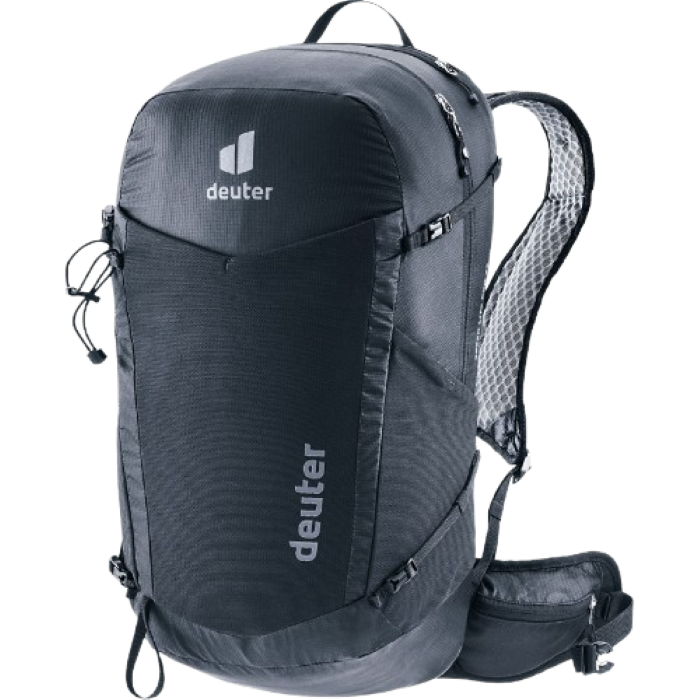
Deuter Speed Lite Pro 25
Versatile Ultralite Daypack
CleverHiker Rating: 4.6/5.0
Price: $130
Weight: 1 lb. 6 oz.
Capacity: 23L / 25L
Frame: foam sheet
Pros
- Comfortable & flexible back panel
- SL women's model for petite bodies
- Includes 2L HydraPak water bladder
- Ample pockets & organization options
- Vest-style shoulder straps
Cons
- Overbuilt for simple day hikes
- Too slim and technical for urban use
- Limited separation in main compartment
The Deuter Speed Lite Pro 23 (women’s) / 25 (men’s) is a high-performance daypack built to cover miles and gain elevation. We tested the slightly smaller 23 SL version (designed for women and more petite frames), but the overall design, materials, and features are consistent across both models. The SL fit includes contoured S-shaped shoulder straps and a well-placed sternum strap that avoids chest pressure, making it one of the most comfortable packs our petite female test has worn.
Designed with climbers, fastpackers, and serious day hikers in mind, the Speed Lite Pro 25 is a breathable and stable daypack loaded with features. The vest-style shoulder straps are a standout, offering excellent on-the-go storage and a snug fit. The flexible mesh waist belt adds stability without excess padding, and the deep U-zipper offers quick access to buried gear. Materials feel premium, and the layout is dialed—every piece of gear has a place, from trekking poles to hydration.
That said, it may be overbuilt for casual hikers. There’s minimal internal organization in the main compartment; it doesn’t fit a laptop, and the hydration hose routes across the chest, which can be mildly annoying. But these are small trade-offs for a pack that performs exceptionally well in active, high-output settings.
If you like to move fast in the mountains and are looking for a pack that balances comfort, technical capability, and durability, the Speed Lite Pro 25 is a stellar choice. For casual trails or everyday use, it might be more pack than you need, but for serious pursuits, it’s worth the investment.
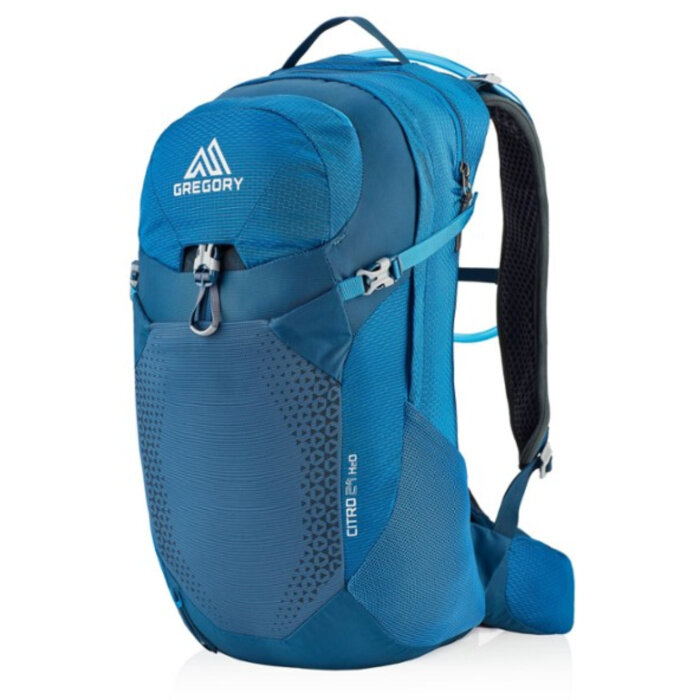
Gregory Citro 24 H20 / Juno 24 H20
Best Hydration Daypack
Price: $170
Weight: 2 lb. / 1 lb. 15 oz.
Capacity: 24 L
Frame: Aluminum alloy Frame
Pros
- Hydration bladder included
- Very comfortable
- Good internal structure
- Transfers weight to hips well
- Good organization
- Large & convenient opening for main compartment
- Durable
- Plus size available
Cons
- Heavier than some
- Expensive
- Side pockets are tight for wide bottles
The Gregory Citro 24 H20 (men’s) and Juno 24 H20 (women’s) are our favorite hydration packs. These bags feature simple, strong frames that offer just enough support to transfer weight to your hips for a very comfortable carry. We’ve found that with the 3-liter reservoir and all pockets full, these bags are more agile and streamlined than other daypacks with a similar capacity and weight.
The Citro and Juno have a ton of useful pockets, including large and small zippered compartments, hipbelt pockets, and a stretchy front mesh pocket for stashing your hat or jacket. We appreciate the small pocket at the top with a divider for keys, chapstick, and more. Daypacks with zippered main compartments like this – as opposed to backpacks with the drawstring and top lid design – are often quicker and easier to get in and out of.
Gregory also includes our top choice for hydration bladders – the 3-liter Gregory 3D Hydro – with the Citro and the Juno. We’re big fans of this reservoir because it’s durable, functional, and exceptionally easy to keep clean. These bags are built around the 3D Hydro, including adjustable clips to mount the mouthpiece on the shoulder straps, a ventilated mesh back to increase airflow, and a thick internal clip to keep the reservoir upright.
The reservoir is included, so you’ll pay a bit more for the Citro and Juno, but these durable, made-for-the-trail bags will pay you back over and over. They are a bit on the heavy and bulky side, though, so if you like a sleek, small daypack, these may be a bit much.
If you don’t need the bladder, we also love the regular Citro 24 and Juno 24, which cost less. But for hikers who want comfort, storage, and one of the best hydration systems on the market all in one bag, we highly recommend the Gregory Citro 24 H20 and Juno 24 H20.
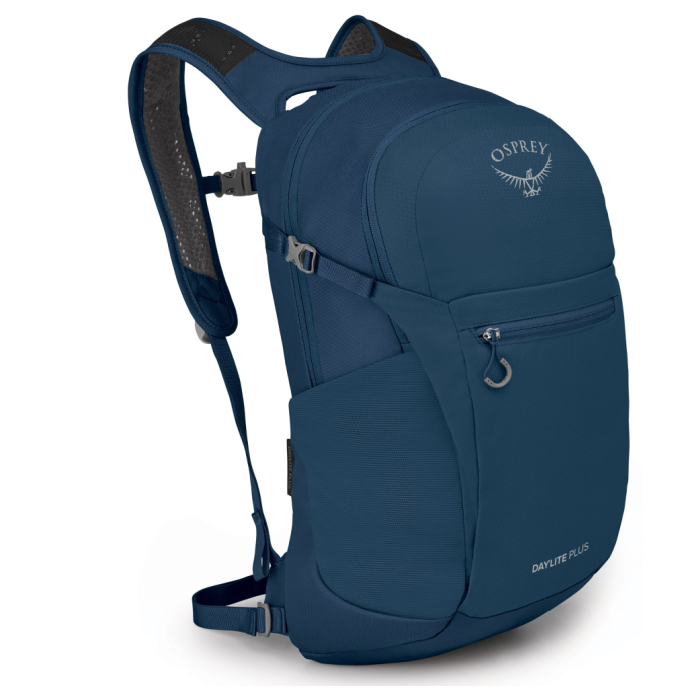
Osprey Daylite Plus
Best Budget Daypack
CleverHiker Rating: 4.4/5.0
Price: $75
Weight: 1 lb. 5 oz.
Capacity: 20 L
Frame: None
Pros
- Less expensive
- Versatile
- Comfortable
- Durable material
- Removable hipbelt
- Stylish design
Cons
- Compression strap design isn’t our favorite
- External front pocket isn’t stretchy
The Osprey Daylite Plus is a trendy, comfortable, and affordable daypack. We like using it around town, hiking short-to-moderate trails, and traveling. Its stylish design makes the price tag even more appealing.
The organizational features on the Daylite Plus are better than most other daypacks of this size. Five external pockets allow you to keep water bottles and small items secure, organized, and easy to access on the go. Smart and simple internal pockets offer versatile storage for whatever we need from the wilderness to whiteboard. The internal padded sleeve easily fits up to a 13-inch laptop or a 2-liter hydration pouch.
This model is built to last, and that makes it a standout choice for those wanting a single do-it-all bag that will hold up to hard use. However, that also means it’s a bit heavier, putting it in the middle of this list for weight. Its foam back panel means it’s less compressible than other frameless daypacks, though it’s still more packable than options with frames.
This daypack also has some quirks that may not work well for everyone. The sternum strap is a bit short for folks with broader chests, and it rides a bit awkwardly when fully loaded. We like the compression straps, though they block the main zipper compartment on both sides, so you’ll need to unclip them for full access.
But with clip-on compatibility that works with many Osprey travel bags, a 20-liter capacity that feels bigger than it is, and a durable build, there’s something for everyone in the Daylite Plus. Whether you’re trekking the high country or just lapping your neighborhood, we highly recommend this affordable and comfortable backpack.

LL Bean Stowaway
Best Compressible Backpack
CleverHiker Rating: 4.4/5.0
Price: $65
Weight: 14 oz.
Capacity: 22 L
Frame: None
Pros
- Packs small (6”x6”)
- Tons of pockets
- Lightweight
- Less expensive
Cons
- Not as durable
- Uncomfortable over extra long distances
- Shallow mesh pockets
The LL Bean Stowaway Pack is a small workhorse for hikes, travels, or on-the-go adventures. This stowable pack delivers in spades, including plenty of storage, padded mesh for comfort on the back and shoulder straps, and a clean aesthetic.
The main highlight of the Stowaway is just how lightweight and compressible it is. This stylish award-winner weighs a mere 14 ounces. It only takes 1 to 2 minutes to transform into a package only 6 inches square. At that size, it easily fits in a suitcase or backpack when heading out on longer trips, making this bag a perfect choice whether you’re day hiking or traveling around the world.
And the Stowaway is super functional. This model punches well above its weight class for organization and comfort, featuring six functional pockets, adjustable sternum and waist straps, and multiple colorways. It’s made of 75D ripstop polyester, making it more durable than other packable backpacks. This is the ideal bag to deploy for side trips, summits, and smaller excursions while you leave the rest of your gear behind for a bit.
The tradeoff for that packability is that the Stowaway 22 has no frame, so it isn’t great for super long days on the trail where it needs to be packed carefully to distribute weight well. We recommend a clothing layer inside the pack against your back for cushioning to add a bit of structure to the bag. However, it’s very convenient for travel and short hikes.
We also find that the pocket designs aren’t perfect : the internal pocket is blocked if you’re using a hydration bladder, and the side pockets are too shallow to hold water bottles. And, it can be difficult
This little pack is simple, stuffable, and super versatile. If you keep the load light, you’ll hardly notice it on your back – and for such a low price, you’ll hardly notice it on your wallet, too. The LL Bean Stowaway is a great choice for travelers, hikers, and people who need a lightweight, packable daypack.
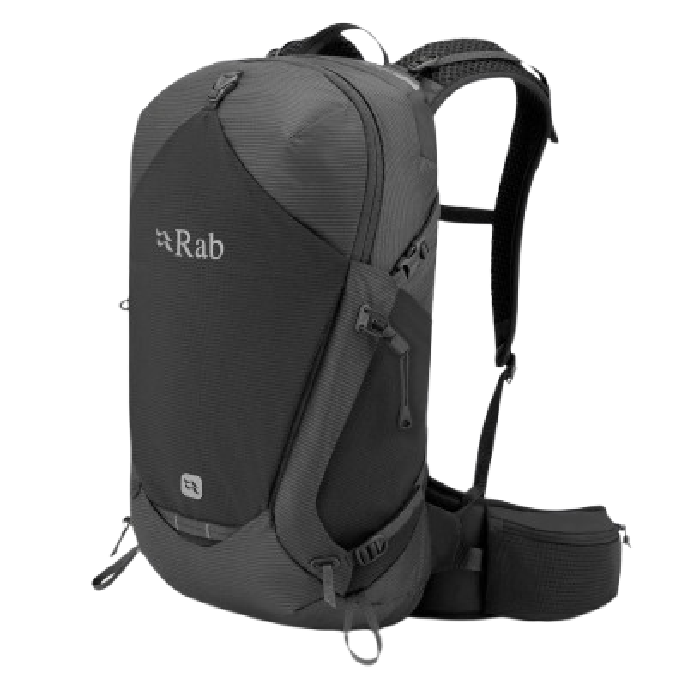
Rab Protium 27
Best Feature-Forward Pack with Larger Capacity
CleverHiker Rating: 4.3/5.0
Price: $180
Weight: 2 lb. 6 oz.
Capacity: 27 L
Frame: Internal
Pros
- Highly customizable fit
- Comfortable shoulder & waist straps
- Excellent pocket organization
- Included raincover with dedicated pocket
- External hydration sleeve
- Breathable
Cons
- Narrow hydration reservoir pocket
- 27 liters is large for many day hikes
- Shoulders straps could use more padding
- Technical features are overkill for simple hikes
In Spring 2025, Rab rolled out its Protium line of backpacks, and we were immediately impressed with the Protium 27. This is a rugged and versatile bag with plenty of storage, technical features, and outstanding comfort. It performed well during 200+ miles of testing in rough landscapes across Colorado and Utah, making it an Editor’s Pick on our 2025 list.
The Protium 27 is comfortable thanks to a super customizable mesh back panel that works for different torso lengths and body shapes. The breathable back panel design helped us dump sweat on hot days, and wide, cushioned foam waist straps kept us comfy from 20°F to 90°F. We did find that the shoulder straps felt a bit thin and uncomfortable with loads over 25 pounds, but this was a minor issue for most hikes.
With a 27-liter capacity, the Protium carries weight well thanks to a ton of smart storage. We found a place for everything we wanted in winter and summer conditions due to a huge main compartment, deep side mesh pockets for any size water bottles, and a top zippered compartment for valuables. This is the only pack on our list with an external hydration pocket. Although it’s a bit tight for sliding bladders in and out, it still works with most reservoirs.
We put this thing through the wringer from brambly, rocky desert trails to frigid and snowy mountain passes, and it’s built to last. A rain cover is included for wet weather protection. The sturdy build makes the Protium a bit bulkier and heavier than some bags on this list, but when you need a durable, reliable bag for brutal conditions, we keep reaching for this one more and more.
This pack may be overkill for casual hikes and shorter distances and comes with a high price point. But you get what you pay for. The Protium 27 is a long-lasting and top-performing daypack for hiking year-round in almost any weather or landscape. If you need a roomy and versatile pack that can keep up on your next adventure, this one’s worth a closer look.
More: Rab Protium Full Review
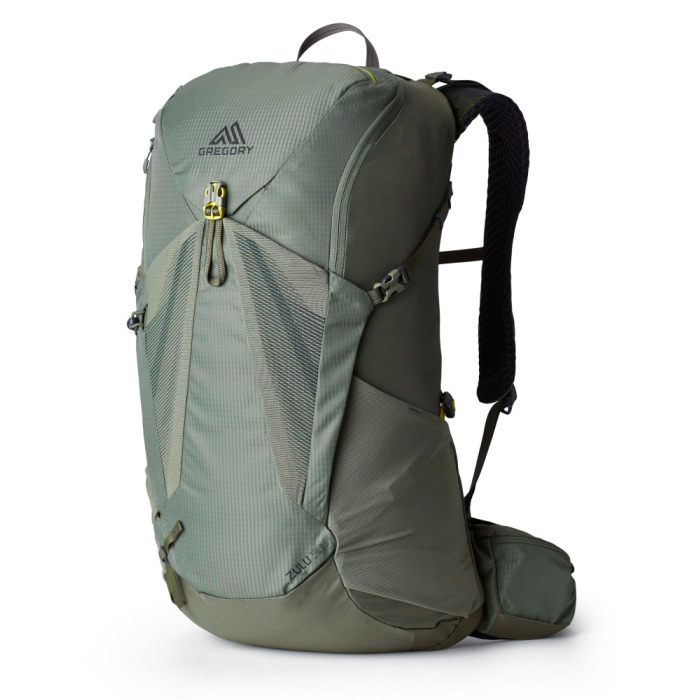
Gregory Zulu 30
Comfortable & Well-Ventilated Backpack for Long Days
CleverHiker Rating: 4.3/5.0
Price: $170
Weight: 3 lb. 1.9 oz.
Capacity: 30 L
Frame: Perimeter Wire
Pros
- Enables high organization
- Large volume
- Easy access U-zip opening
- Durable
- Comfortable over long distances
- Adjustable torso
Cons
- Heavier
- Water bottle pockets are tight & shallow
- Few lash points
The Gregory Zulu 30 hits the mark for everything we want in a large daypack. When it comes to managing heavier loads, carrying bulky gear, or hiking longer days, the Zulu is truly built for comfort. This backpack has an adjustable torso length of up to 3.5 inches, so it can fit a variety of body sizes.
The Zulu 30 also features a lightweight internal frame, tons of padding and support on the hipbelt and shoulder pads. Ventilation keeps your back cool if you’re trudging through the heat. Though the mesh water bottle pockets are thin and a bit shallow, they also come with nylon cinch straps to keep your bottles in place so you can hydrate on the go.
This bag has tons of pockets, including seven on the outside alone. Its giant U-zip at the top allows the bag to open widely and quickly for access to the interior and features another zippered compartment for stashing all your small items. A dedicated water bladder pocket and hook are compatible with most two- and three-liter hydration pouches.
This is a large-volume bag, which means that it weighs more. At just over three pounds, the Zulu 30 is one of the heaviest backpacks on our list. We also find the zippered top pocket design a bit awkward, and there aren’t many external lash points. That said, its exceptional capacity, adjustability, and other technical features make up for it.
This model is a worthy choice for those who want a roomy, comfortable daypack but don’t mind a bit of extra weight. We recommend the Zulu 30 as a top option for new hikers who want to bring some extra layers or snacks, for parents carrying the kids’ water and gear, or for a seasoned hiking veteran who needs the larger capacity for a longer trip.
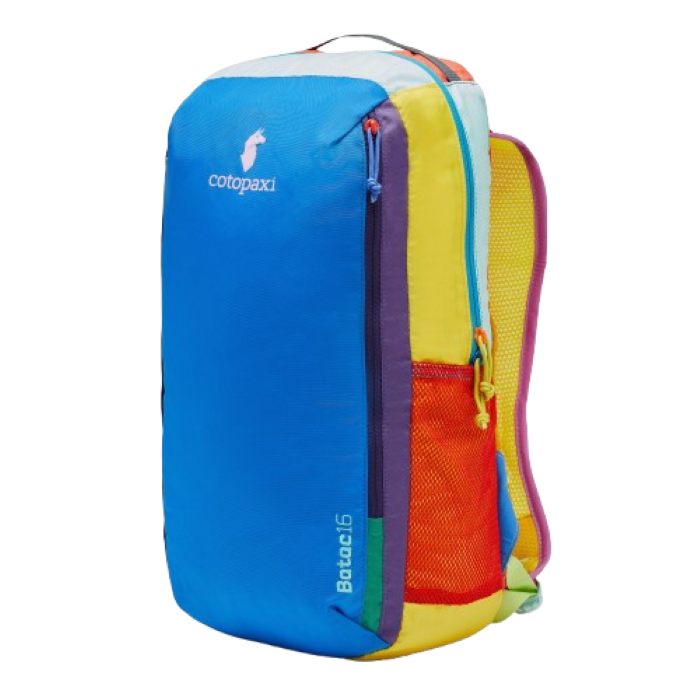
Cotopaxi Batac 16
Versatile Ultralight Daypack
CleverHiker Rating: 4.2/5.0
Price: $65
Weight: 11.9 oz.
Capacity: 16L
Frame: Frameless
Pros
- Lightweight and packable
- Wide, breathable mesh straps
- Sternum strap is highly adjustable
- Minimalist design
- One-of-a-kind colorways
Cons
- Not reservoir compatible
- Minimal structure and padding
- Durability
The Cotopaxi Batac 16L shines as a lightweight, ultra-packable day pack—ideal for travel, short hikes, or tossing in your luggage as a backup. We appreciated how easy it was to roll up and stash away when empty. Cotopaxi’s vibrant Del Día color schemes add a splash of fun to any outing, and the micro size hits a sweet spot for day use without feeling bulky or oversized.
For short adventures or as an around-town carry, the Batac gets a lot right. The internal organization is simple but effective, and the sternum strap stands out for having excellent adjustability. While the pack lacks a hip belt, we didn’t miss it given its limited capacity.
There are compromises made for its minimalist design. The back panel is unstructured and unpadded; this can make carrying rigid or oddly shaped items awkward and uncomfortable. Side pockets are a non-elastic mesh—fine for smaller bottles, but there’s not enough stretch to accommodate wider items. We also noticed the interior seams started fraying after limited use, raising concerns about long-term durability. And, while there’s an internal sleeve for a hydration bladder, the lack of a hose port limits its trail-readiness.
Overall, the Batac 16L excels as a lightweight pack for casual use, travel, or a stash pack to slip into a larger backpack for summit excursions. It’s not the most robust option. But for its intended use – light loads, short trips, and spontaneous adventures -the Cotopaxi Batac 16L brings a lot of character and convenience to the table.
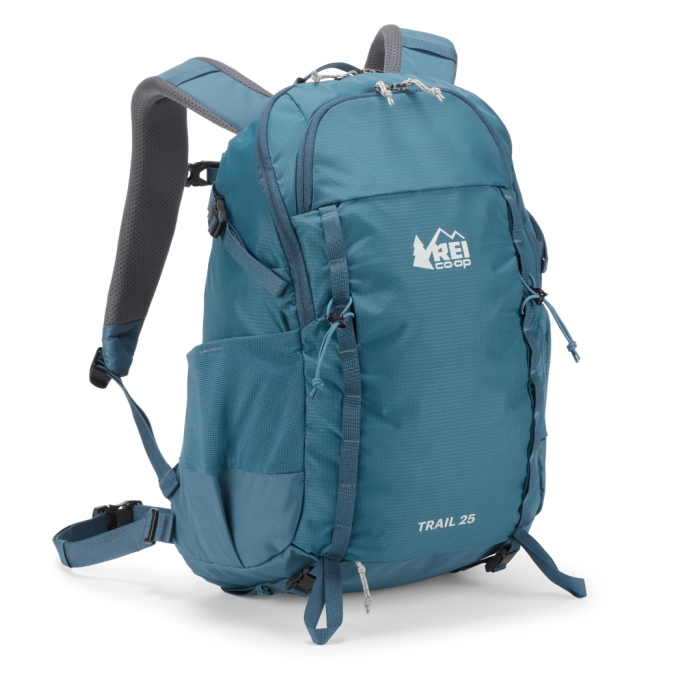
REI Trail 25
Roomy Pack That’s Great for Travel & Long Hikes
CleverHiker Rating: 4.2/5.0
Price: $100
Weight: 1 lb. 13 oz.
Capacity: 25 L
Frame: Internal
Pros
- Sturdy
- Durable
- Good price
- Lots of external lash points
- Built-in rain cover
Cons
- Heavy
- Only one external zippered pocket
- Main storage compartment can be awkward
The REI Trail 25 is a great choice for those who need one pack that can do it all. This is a comfortable and durable backpack for almost any hiking adventure. It’s an excellent price point, too, offering premium features of daypacks that cost significantly more.
The padded, mesh-covered straps and plush foam backpanels of the Trail 25 makes it easy to carry all day. The lightweight frame sheet also hits the sweet spot for flexibility and support, an ergonomic design that works well for most body shapes and sizes.
With features like trekking pole attachment points, 16 total external lash points for strapping on gear, bottom accessory straps, and even an included rainfly, this backpack is made for the trail. We’re also big fans of the wrap-around U-shaped zipper on the main compartment. It extends almost to the bottom of the bag, making it easy to pack and access your items when traveling or hiking.
The Trail 25 is a bit bulky for most casual day hikes. We wish this daypack had waist pockets or a wider hipbelt, as it doesn’t distribute weight as well as competitive packs. We also appreciate the two zippered pockets for small items. But, with pockets both located on the upper pack on the main compartment, these can be awkward to access.
That said, these are minor points – the Trail 25 is versatile for travel, hiking, commuting, and even school thanks to its comfort and long-lasting design.
More: REI Trail 25 Full Review
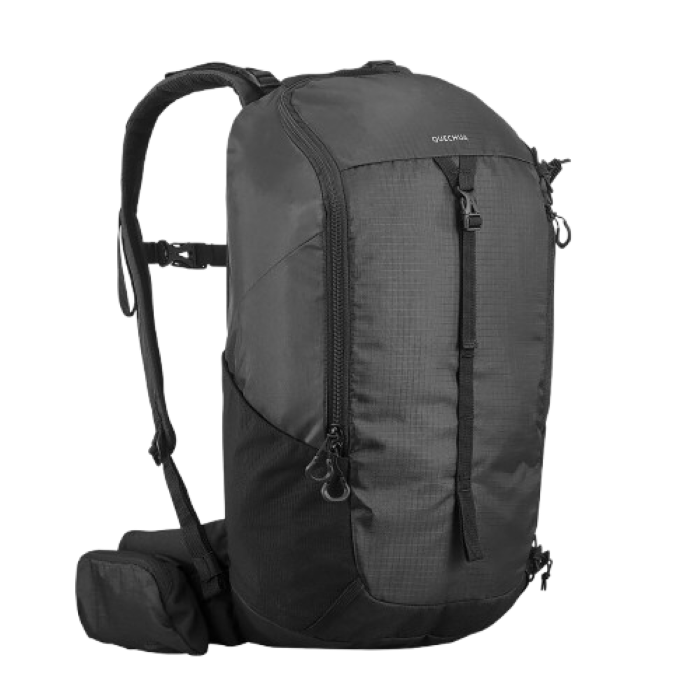
Decathlon Quechua MH100 20L
Solid Budget Daypack
CleverHiker Rating: 4.0/5.0
Price: $40
Weight: 1 lb. 11 oz.
Capacity: 20L
Frame: Plastic with aluminum shank
Pros
- Supportive and comfortable for the price
- Mix of mesh and zippered pockets
- Beginner-focused features
- Durable for casual use
- Deep zipper access
Cons
- Generous padding traps heat
- Limited compressibility
- Basic construction details
The Decathlon Quechua MH100 20L is a no-frills daypack designed for beginner hikers, casual adventurers, and anyone wanting an affordable pack. It stands out for its internal support structure – a plastic frame with a metal shank – that adds impressive stability for the price. This structure, combined with generous back padding, helps the pack carry heavier loads more comfortably than most entry-level options.
Organization is simple but effective. The J-shaped zipper gives quick access to items deep in the pack, and a mix of stretchy and zippered pockets handles small gear and snacks. Features like trekking pole bungees and a hip belt pocket (though tight for larger phones) add trail-ready convenience.
However, comfort isn’t perfect. The thick back padding traps heat, and the pack can feel bulky when underloaded. Fit may also be an issue for some users due to a low sternum strap.
Durability is decent but reflects the budget price tag. Materials are tough and reinforced in critical areas. There are some quality control issues, like loose threads and unfinished edges. The pack isn’t fully weather-resistant, and its rigid back panel limits compressibility, making it less ideal for travel or storage in tight spaces.
Still, for the cost, the MH100 delivers strong value. It’s a well-designed starter pack that feels trail-worthy without overcomplicating things. If you’re just starting out or want an inexpensive, capable daypack for hikes, errands, or dog walks, the MH100 20L is a solid option.
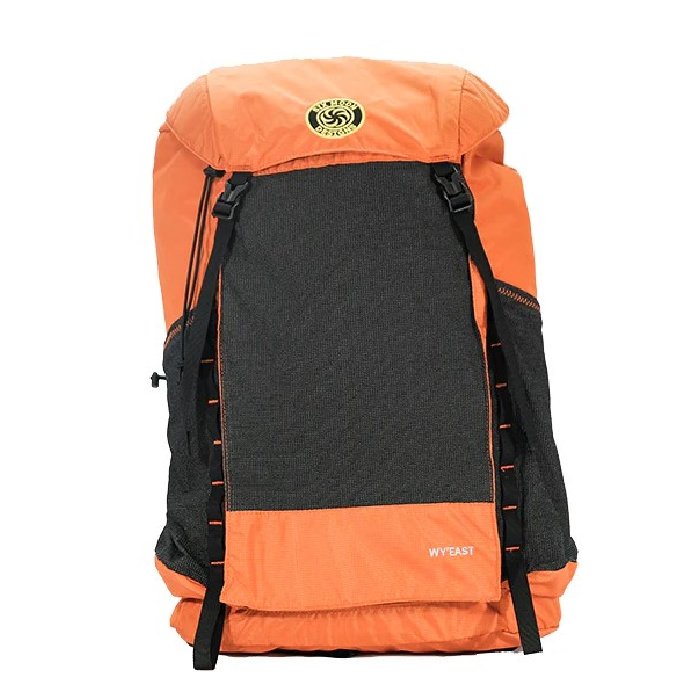
Six Moon Designs Wy’east
Best Ultralight Daypack for Long Day Hikes & Quick Overnights
CleverHiker Rating: 4.2/5.0
Price: $185
Weight: 1 lb. 9 oz.
Capacity: 30 L
Frame: Internal
Pros
- Lightweight for the volume
- Frame is a removable sit pad
- Shoulder strap pockets
- Roomy
- Comfortable over long distances
- Durable
- Highly water-resistant
Cons
- Wide shoulder straps don’t sit well on all body types
- Suboptimal brain organization
The Six Moon Designs Wy’east is one of the lightest daypacks we’ve tested, but it comes with one of the largest capacities – 30 liters – and is loaded with convenient features. This bag is great for long hikes when you need to carry bulky items, and it can even work as an overnight pack for those with fully ultralight setups.
We like that the frame doubles as a foam sit pad, and it offers a total of 10 external lash points for strapping on gear. The deep stash pocket and water bottle pockets are made of strong material, so they’ll last longer than the mesh on most other bags.
We love all the pockets of the Wy-East – with this much storage, the bag performs like a backpacking pack but without the bulk or weight. We can easily carry a tablet or books with ease. The Wy’east comes with two useful shoulder strap pockets and wide hip pockets, too. The hipbelt is removable, so this bag is extra versatile as a casual carrier around town or a burly backpack for the deep woods.
However, no bag is perfect. The shoulder straps are a bit wider, so it’s not a great fit for those with narrow shoulders or small frames. Wide shoulder straps don’t sit well on all body types, and there aren’t any load lifters to adjust weight on heavy-carry days. We find the water reservoir compatibility is awkward at best, and the sit pad is difficult to remove from inside when packed. And, the foam frame – while great as a sit pad – doesn’t offer as much structure for heavier loads.
But if you’re looking for a comfy, colorful, and quality daypack that excels in weight and features, this is it. Ultralight hikers looking for the perfect go-between for big-mile day hikes and short overnights also can’t go wrong with the Wy’east.
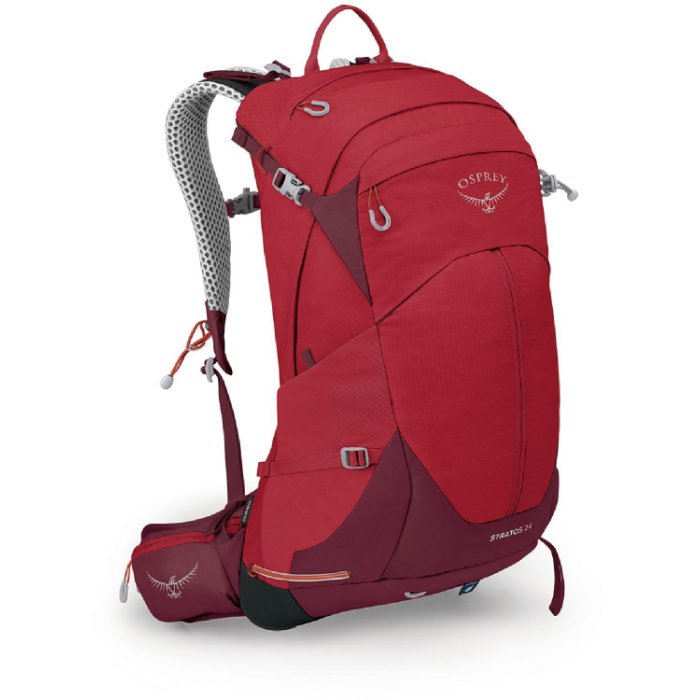
Osprey Stratos 24 / Sirrus 24
Supportive & Well-Ventilated Daypack for Long Hikes
CleverHiker Rating: 4.3/5.0
Price: $180
Weight: 2 lb. 12 oz.
Capacity: 24 L
Frame: LiteWire
Pros
- Innovative ventilating back panel
- Useful hiking pole hook system
- Comfortable mesh back
- Good pocket organization
- Includes raincover
- Strong build
Cons
- Expensive
- No outer stash pocket
- Heavier than some
The Osprey Stratos 24 (men’s) and Sirrus 24 (women’s) have some of the most comfortable frames of any daypacks we’ve tested. The Stratos and Sirrus feature stretch-mesh back panels that extend from the shoulder straps to the back to the hipbelt. This soft, breathable mesh feels incredibly cushy on the body.
We love that these Osprey models offer an adjustable torso length. No matter who is using them or how the weight in your pack is distributed, you can easily adjust it to fit your body size. These backpacks seamlessly transfer weight to the hipbelt, so even when they are packed full, you won’t feel uncomfortable.
The Stratos and Sirrus have a solid organizational system as well with convenient gear storage pockets, two pole storage options, hipbelt pockets, and easy-to-reach water bottle holsters. We found the zippered front panel pocket to be a bit cumbersome to access, but many hikers will love this design because it keeps items more secure. And, these bags include a rain cover with a dedicated pocket at the bottom. If you’re hiking in clear conditions, you can remove the pack cover and gain an extra pocket – or keep it to keep your gear dry in afternoon showers.
The main reason they’re a bit further down the list? These bags are so burly that they’re not our first choice for short adventures. We often just don’t need to carry that much or need so much structure. The Stratos and Sirrus are some of the heaviest daypacks on this list and carry the highest price tag. However, when it comes to organization, durability, and support, these packs are head of the class.
Featuring Osprey’s popular Airspeed suspension system, these are exceptionally comfortable and well-ventilated daypacks built for extended adventures. For hikers who need maximum support for any amount of gear, the Stratos 24 and Sirrus 24 backpacks are tough to beat.
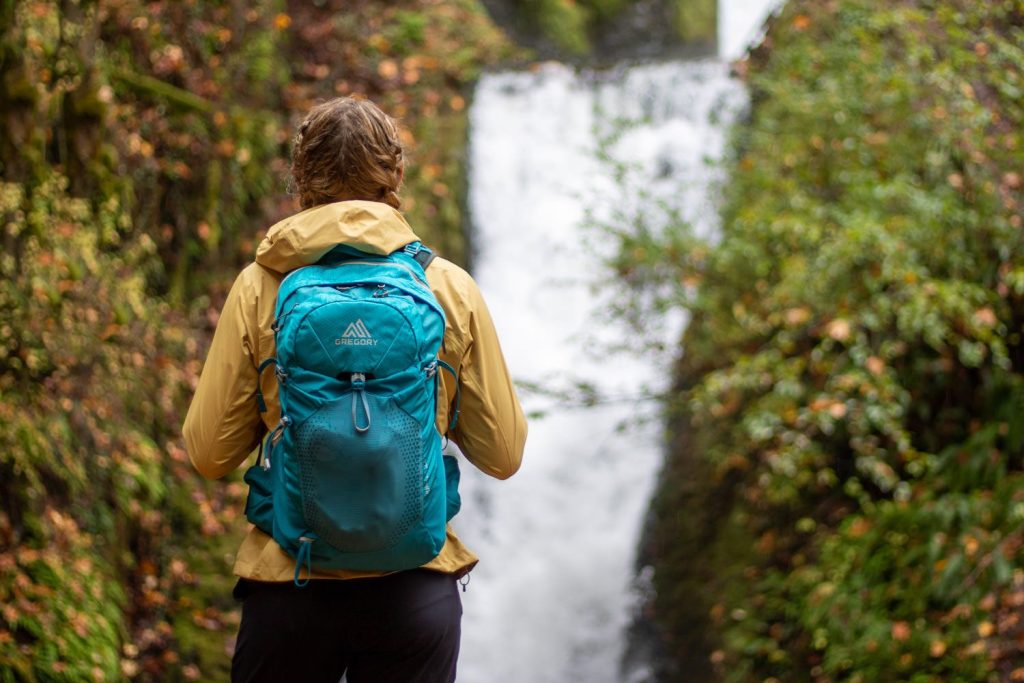
Product Comparison Table
| oSort | Product | Price | Weight | Capacity | Frame | Comfort | Organization | User-Friendliness | Durability | Weight & Packability | 0 |
Osprey Talon 22 / Tempest 22 View Men's View Women's |
$160 | 2 lb. 1 oz. / 1 lb. 14.6 oz. | 22 L / 22 L | Internal framesheet | 4.7 | 4.8 | 4.7 | 4.7 | 4.3 | 1 |
EXPED Skyline 20 View at REI View at EXPED |
$150 | 1 lb. 11.9 oz. | 20L | Polyethylene foam board | 4.7 | 4.8 | 4.5 | 4.7 | 4.5 | 2 |
REI Flash 22 View at REI |
$60 | 14 oz. | 22 L | None | 4.2 | 4.3 | 4.2 | 4.2 | 4.9 | 3 |
Gregory Citro 24 H20 / Juno 24 H20 View Men's View Women's |
$170 | 2 lb. / 1 lb. 15 oz. | 24 L | Aluminum alloy Frame | 4.7 | 4.7 | 4.6 | 4.7 | 4.2 | 4 |
Deuter Speed Lite Pro 25 View Men's View Men's |
$130 | 1 lb. 6 oz. | 23L / 25L | foam sheet | 4.7 | 4.7 | 4.5 | 4.6 | 4.7 | 5 |
Osprey Daylite Plus View at REI View at Amazon |
$75 | 1 lb. 5 oz. | 20 L | None | 4.4 | 4.5 | 4.3 | 4.5 | 4.7 | 6 |
LL Bean Stowaway View at LL Bean |
$65 | 14 oz. | 22 L | None | 4.1 | 4.4 | 4.2 | 4.1 | 4.9 | 7 |
Gregory Zulu 30 View at REI View at Amazon |
$170 | 3 lb. 1.9 oz. | 30 L | Perimeter Wire | 4.6 | 4.6 | 4.6 | 4.8 | 3.3 | 8 |
Rab Protium 27 View at Rab View at Amazon |
$180 | 2 lb. 6 oz. | 27 L | Internal | 4.5 | 4.6 | 4.6 | 4.3 | 4.3 | 9 |
Osprey Stratos 24 / Sirrus 24 View Stratos 24 View Sirrus 24 |
$180 | 2 lb. 12 oz. | 24 L | LiteWire | 4.3 | 4.4 | 4.1 | 4.3 | 3.8 | 10 |
REI Trail 25 View at REI |
$100 | 1 lb. 13 oz. | 25 L | Internal | 4.3 | 4.5 | 4.4 | 4.6 | 4.2 | 11 |
Six Moon Designs Wy’east View at Amazon View at Six Moon Designs |
$185 | 1 lb. 9 oz. | 30 L | Internal | 4.3 | 4.4 | 4.1 | 4.3 | 4.6 | 12 |
Cotopaxi Batac 16 View at REI View at Amazon |
$65 | 11.9 oz. | 16L | Frameless | 4.1 | 4.1 | 4.4 | 4.0 | 5.0 | 13 |
Decathlon Quechua MH100 20L View at Decathlon |
$40 | 1 lb. 11 oz. | 20L | Plastic with aluminum shank | 4.0 | 4.1 | 4.3 | 3.9 | 4.0 |
|---|
How We Test & Methodology
Over the years, we’ve taken daypacks on nearly 1,000 hikes and multisport adventures, putting them to the test in a variety of conditions. The most recent batch accompanied us on multisport adventures throughout Southern Idaho and around Squamish, British Columbia. From smooth trail cruising to bushwhacking through Russian olive and sagebrush, we’ve logged hundreds of miles to identify the best options available. Below are the key metrics we used to assess every pack.
COMFORT
We tested each pack on a range of body types and under varying loads, from ultralight setups to fully packed day missions. Our team paid close attention to the padding on the shoulder straps, support provided by the back panel, and how well the load transferred from shoulders to hips. Fit adjustability was a key part of our evaluation, including torso length options, hipbelt adaptability, and sternum strap range. We also looked for ventilation features, like mesh panels and air channels, which are crucial for high-output activities and hot weather. Comfort wasn’t judged statically—we looked at how each pack performed through long, sweaty days outside.
ORGANIZATION
We rated pack organization by using each one across a variety of adventures, from mountain hikes to climbing and paddling. This gave us insight into how each layout handled different gear loads. We tested access to gear on the move and how easy it was to grab essentials like rain layers and snacks. Packs with smartly placed stretch pockets, intuitive internal layouts, and dedicated gear sleeves scored higher. External gear loops, compression straps, and tool attachments also mattered, especially when they made it easier to carry awkward or bulky gear.
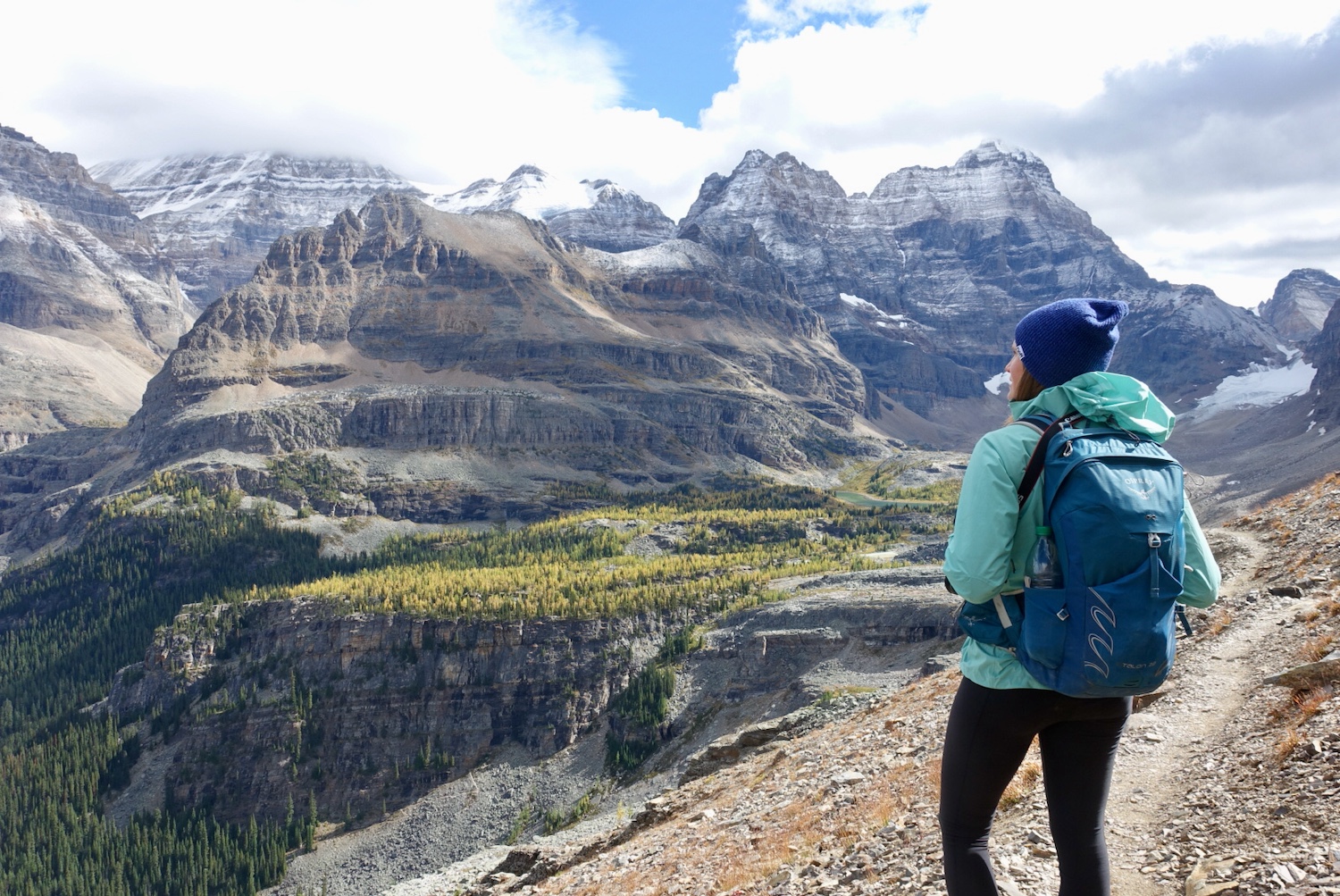
USER-FRIENDLINESS
To assess user-friendliness, we focused on how intuitive and efficient each pack was to use in the field. That included evaluating how easily adjustments could be made on the go and whether features like buckles, zippers, and hydration ports worked smoothly and reliably. We paid close attention to how obvious the pack’s features were to locate and operate without a manual. The ease of accessing water bottles, stashing small essentials in hipbelt or lid pockets, and attaching trekking poles or helmets were all tested across various conditions and body types. Packs with well-thought-out, streamlined designs performed best.
DURABILITY
When testing durability, we put each pack through its paces across various landscapes, including rocky trails, alpine terrain, and dense brush. We pushed them to the limit by squeezing past granite rocks and through overgrown trails to test their resistance to abrasion and stitching strength. We closely inspected high-stress areas like strap junctions, zippers, and buckles for any signs of wear or failure. We rated the materials based on their toughness and ability to repel moisture or withstand rough handling. Over time, we also evaluated how well the packs performed during extended use in harsh weather and multi-sport scenarios, looking for any signs of premature wear or decline in performance.
WEIGHT & COMPRESSIBILITY
We verified the manufacturer’s weight specs by weighing each pack, then evaluated how that weight affected its performance on the trail. We examined the frame type and whether it could be removed to reduce bulk or adjust the carry feel. While weight was a factor, we also judged the packs on how well they compressed – both during use and for storage. The ones that could cinch down small without sacrificing structure or comfort scored higher. We sought out options that balanced lightness, packability, and function well across various day-use scenarios.
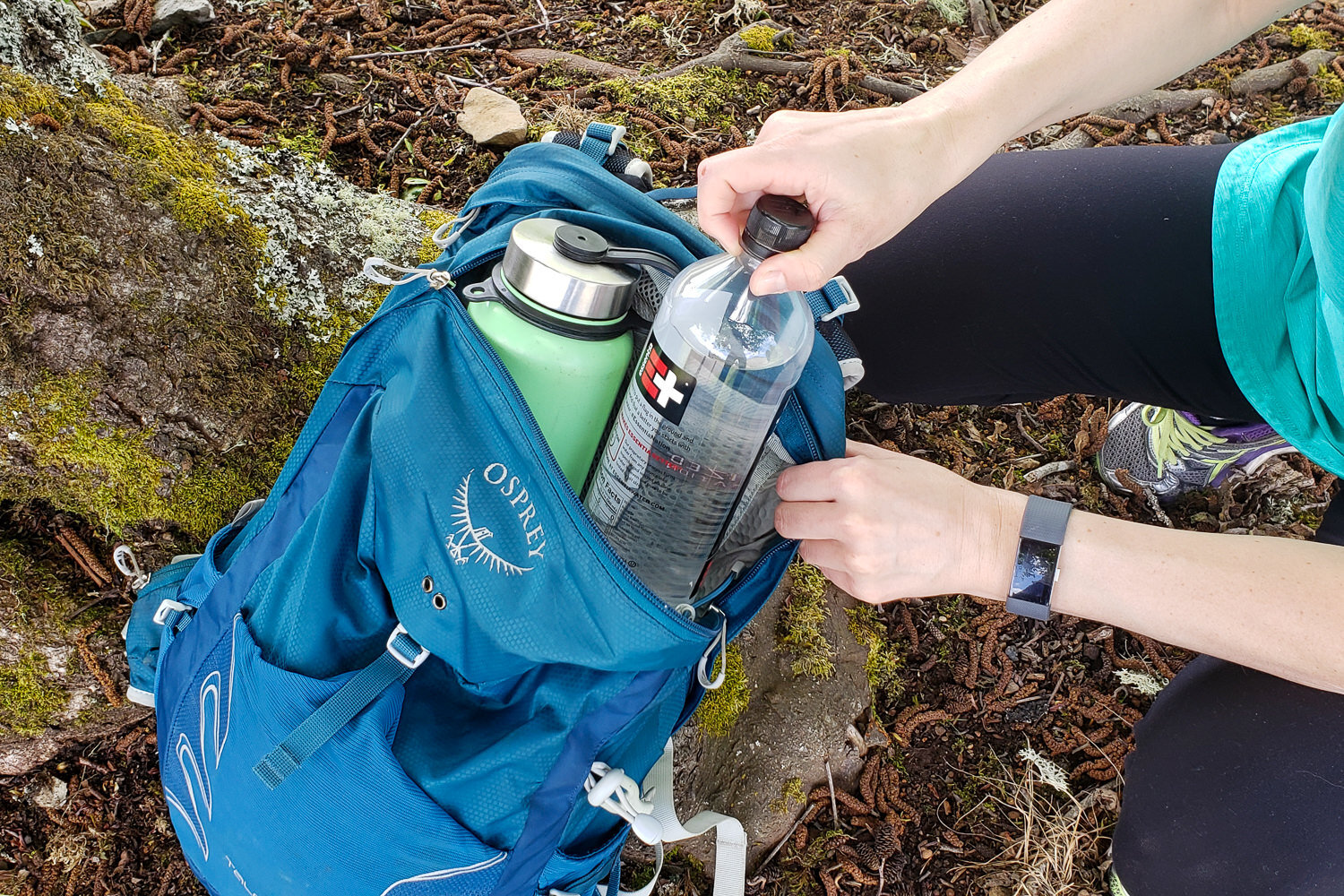
Why Trust CleverHiker
Our CleverHiker team loves to hike, and we’ve covered tens of thousands of miles and 3,000+ days rocking all types of daypacks to determine which are the best of the best. Ian Krammer, gear analyst and lead daypack tester, has used the packs on this list to summit over 700 Colorado peaks over 12,000 feet, including all of the state’s 14,000-foot mountains. His weekly adventures to the high alpine have given him detailed insight into when and how these backpacks stand out.
Our other tester for this guide, Abigail Taylor, has spent thousands of days (and nights) in the field as a former Outward Bound instructor and lifelong outdoor enthusiast. Abigail tested this year’s top daypacks across a range of conditions: hiking trails around the Payette National Forest, navigating Monmouth Canyon to Echo Lake, running river safety for a packrafting descent near Twin Falls, and scrambling through a multi-sport climb in Squamish, BC. Her experience spans both high-output alpine adventures and the kind of slow, meticulous exploration (like hours spent bushwhacking or creekbed-walking) that reveals the strengths and flaws of a pack over time.
Analysis & Results
We break down our analysis along five dimensions: comfort, organization, user-friendliness, durability, and weight and compressibility. Our results below outline our findings in each of these metrics.
VALUE
Backpacks can cost a pretty penny, so it’s critical to weigh features and durability against the asking price. A good daypack should feel like a long-term investment, whether it’s a $40 budget model or a $150 premium performer. We’re always on the lookout for affordable hidden gems that surprise us, as well as high-end packs that truly justify their cost.
Our favorite affordable pick this year is the Decathlon Quechua MH100 20L (around $40). It’s straightforward, compact, and well-suited for casual hikers or travelers who want something functional without overthinking the purchase. While it doesn’t have all the bells and whistles of pricier options, the MH100 does a great job covering the basics at a fraction of the price.
For a bit more, the REI Flash 22 remains the reigning king of value. This pack continues to impress with its ultralight feel, thoughtful design, and versatility for a huge range of adventures—from quick evening hikes to ambitious summit pushes. It’s one of those rare products that works for nearly everyone, making it a staple on our list year after year.
On the premium side, the Deuter Speedlite Pro 25 stands out. It packs in stability, smart features, and a build tough enough for serious day hikes, all while staying under $150. For hikers who want something more technical without splurging, this pack hits the sweet spot between high-end performance and reasonable cost.
COMFORT
Everyone has a slightly different body shape, size, and type, but when it comes to daypacks that stay cozy for hours on the trail, a few models stand above the rest. Comfort is one of the most important factors in a pack you’ll actually want to wear, and our top performers combine smart adjustability, well-padded straps, and breathable designs that keep you going all day.
The Osprey Talon 22 / Tempest 20 continues to set the standard, with cushy shoulder straps, highly adjustable hip belts, and load lifters that allow for a precise, dialed-in fit. The ventilated mesh back panel keeps things cool, while even weight distribution reduces fatigue on long climbs or extended treks.
Right alongside it is the Gregory Citro 24 / Juno 24, which impressed us with its excellent suspension system, flexible shoulder straps, and ergonomically curved sternum belt. Like the Osprey, it comes in male/female models, which makes dialing in the perfect fit even easier.
New to the top tier this year are the Deuter Speedlite Pro 25 / SL 23 and the EXPED Skyline 20L, both of which earned high marks for blending support with breathability. Their mesh-heavy designs supplement the padding, striking a balance between cushioned comfort and much-needed ventilation on hot days. These packs also offer multiple adjustment points, making them some of the most customizable we’ve tested.
Other premium brands round out the comfort rankings. The Gregory Zulu 30 remains a standout for its thick hip belt and exceptional suspension system, while the Rab Protium 27 surprised us with its customizable fit. Both excel at carrying heavier loads without compromising on comfort.
Taken together, three of our top four comfort winners offer gender-specific models and extensive adjustability, proving that a tailored fit and well-ventilated mesh panels are just as important as padding when it comes to true all-day comfort.
ORGANIZATION
The most organized daypacks give every piece of gear its place and make it easy to find what you need on the trail. A handful of models stood out this year for their thoughtful pocket layouts, smart attachment systems, and clever little touches that simplify packing and unpacking.
At the very top is the Osprey Talon 22 / Tempest 20, which continues to impress with a perfect blend of internal and external storage. Inside, a hydration sleeve and zippered mesh pocket with key clip keep essentials secure, while outside, dual side stretch pockets, a large front mesh stash pocket, and hipbelt pockets provide quick access on the move. Trekking pole attachments, lash points, and streamlined compression straps round out a design that balances versatility with ease of use.
Sharing the top spot is the newcomer EXPED Skyline 20L, which wowed us with its ultra-functional layout. It features a spacious main compartment with an internal mesh zip pocket, tie-downs for rigging, and a hydration sleeve with a Velcro hanger that’s accessible without opening the pack. On the outside, dual deep side mesh pockets, a large front mesh stash pocket with clip closure, and multiple attachment points make it incredibly adaptable. Smaller details—like a quick-access zip pocket, bungee pole attachments on the shoulder straps, a zippered stretch pocket on the hipbelt, tuck-away ice axe loops, and even Velcro strap keepers to prevent flapping—show how thoroughly this pack was designed with organization in mind.
Close behind are the Gregory Citro 24 / Juno 24 and the Deuter Speedlite Pro 25 / SL 23. The Citro and Juno offer excellent internal/external balance, with smart compartments, hydration compatibility, and plenty of zippered pockets. The Speedlite Pro impressed us with a cavernous main compartment, a stash pocket for hydration, dual mesh side pockets, and a large front mesh pocket. Great organization isn’t just about having lots of pockets—it’s about having the right pockets, in the right places. These packs show how smart design makes all the difference when it comes to functionality.
USER-FRIENDLINESS
A well-designed pack should let you focus on hiking – not wrestling with your gear. When it comes to ease of use, a few packs on our list stood out for making organization and access straightforward. The Osprey Talon 22 takes the top spot in this category thanks to its smart balance of features and simplicity. The main compartment is easy to load, the hipbelt and side pockets are perfectly sized for essentials, and the streamlined design keeps gear close at hand without feeling cluttered.
Other highly user-friendly designs were the Gregory Citro 24 / Juno 24, the Gregory Zulu 30, and the Rab Protium 27. The Citro and Juno models shine because of their hydration design—complete with Gregory’s 3D Hydro Reservoir and magnetic sternum strap attachment for one-handed sipping. They also feature clever internal organization and smooth zippers that make grabbing snacks or small items a breeze. The larger Zulu 30 was noted for its U-zip opening, well-sized external pockets, and accessible hipbelt storage. The Rab Protium 27 impressed us with its clean layout and straightforward functionality, offering just enough pockets without becoming overcomplicated.
Overall, the top performers in this category nail the balance between functionality and simplicity. Whether you want a simple hiking pack or something more for technical outings, there’s a user-friendly option for all your day-long adventures.
WEIGHT & COMPRESSIBILITY
A lightweight daypack can make a big difference on the trail. The top-performing packs in our test struck an excellent balance between minimal weight, compressibility, and usability.
At just 11.9 ounces, the Cotopaxi Batac 16L is the lightest pack on our list. Its stripped-down, stuffable design makes it incredibly compact and easy to stash in a larger bag or suitcase, ideal for travel or summit pushes. However, its smaller 16L capacity limits how much you can carry, making it best suited for minimalist day hikes or urban use.
The LL Bean Stowaway 20L remains one of the most portable and packable options. It folds into its own pocket for easy storage, yet offers a bit more structure than other collapsible models. The lightweight, water-resistant fabric and simple compression straps reduce bulk while retaining decent comfort for all-day use.
The REI Flash 22 continues to impress with its balance of minimalism and function. Weighing just under a pound, it features tough ripstop nylon, a removable foam back panel that doubles as a sit pad, and enough internal volume for longer day hikes. It doesn’t compress as small as the Batac or Stowaway, but its extra structure makes it more versatile on the trail.
Whether you prioritize packability, low weight, or a combination of both, we’ve got some excellent recommendations.
DURABILITY
When it comes to long-term durability, the Gregory Zulu 30 remains the top performer in our testing. Built with tough nylon fabric, reinforced seams, and heavy-duty zippers, this pack held up exceptionally well through repeated use in rugged terrain—including thick bushwhacks and rocky scrambles. Despite abuse, the fabric showed minimal wear, and all hardware remained smooth and intact. If you’re hard on gear, this is the pack to beat.
The EXPED Skyline 20 impressed us with its thicker denier nylon, which has a plasticky, waxy backing that adds water resistance and abrasion protection. All seams and stitching are cleanly finished, and the stretchy mesh is both tough and forgiving. EXPED also offers a five-year parts and materials warranty and in-house repair service, further boosting its long-term value.
The Talon/Tempest 22 continues Osprey’s tradition of quality, with reinforced high-wear zones, sturdy hardware, and streamlined construction. These packs strike an excellent balance between lightweight performance and long-term durability. Similarly, the Citro/Juno 24 H2O pairs ripstop nylon with reinforced stitching and features one of the most durable hydration reservoirs we’ve tested—leak-resistant and easy to clean.
How to Choose a Hiking Daypack
CAPACITY
The capacity of a daypack is typically measured in liters. Most daypacks have capacities ranging between 10-35 liters. Daypacks with a 20-30 liter capacity tend to be the most popular (and the size we use most often) because they offer enough room for a variety of outdoor adventures and have plenty of space for the 10 day hiking essentials.
If you’re looking for a bag that offers more room, you hike in areas with unpredictable weather and need to carry more gear, or you like spending long days on the trail, you’ll likely want a pack with a more robust weight distribution system (i.e. a hipbelt) and a larger capacity (over 30 liters).

WEIGHT
When you’re just out for the day, weight isn’t as big of a concern, and you can pack along a few extra luxuries. An ultralight daypack will get the job done with ease, although they generally don’t have a frame and need to be packed more carefully. We still recommend keeping your load as light as possible to give yourself the best chance of hiking further for longer and to reduce strain on your muscles and joints.
Sometimes your adventure will call for heavier gear, like when you’re heading deeper into the backcountry, traveling over snow, or carrying equipment like an ice axe or rope for summiting mountains. If this describes the majority of your hiking trips, you should consider one of the more supportive daypacks below. They often have internal frames that provide more structure and better support on long miles.
ORGANIZATION
Most daypacks have a large top-loading compartment for storing the majority of your gear, two external side pockets for water bottles, and a separate compartment on top for stashing smaller items. We prefer bags with additional organization pockets internally and externally to make it easy to compartmentalize and access gear. Many daypacks also have a front mesh stash pocket, which is convenient for storing gear we use often like a raincoat, water filter, or a hat and gloves.
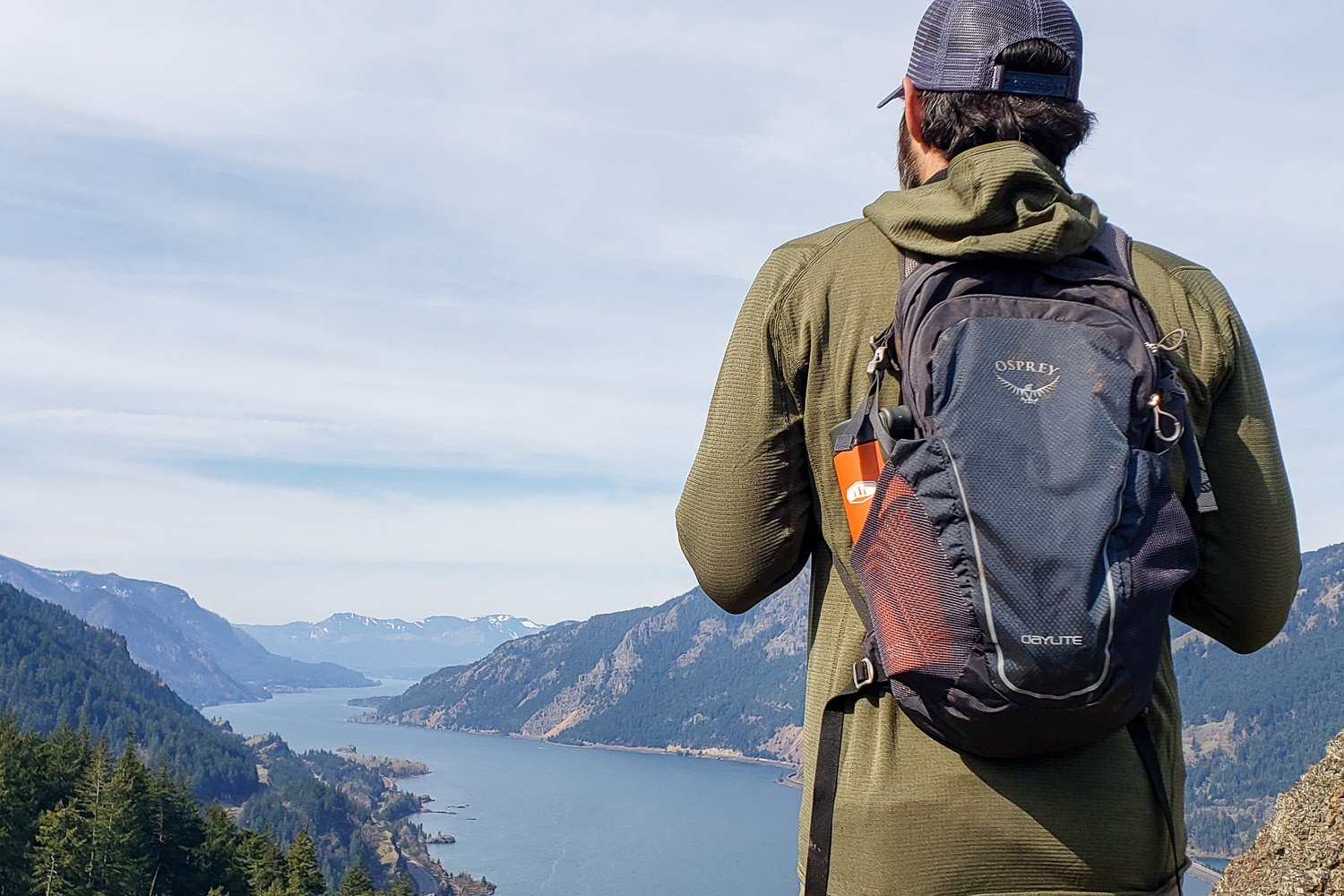
FRAME
Some daypacks are frameless, meaning they have little to no structure to disperse weight across your back and onto your hips. They use a thin foam pad to add a bit of structure to the back. Frameless packs are highly portable and handy for quick trips.
Heavier packs usually feature a frame – typically a rounded piece of lightweight metal – to add structure to the bag. These packs also usually feature plenty of padding, pockets, and a hipbelt, so they’re better when you’ll need more support and storage on longer adventures with heavy loads.
BACK PANEL & VENTILATION
Some daypacks have a mesh back panel design which allows for more airflow and ventilation on the trail. Your back is still going to get sweaty, but many hikers find those types of frames to be more comfortable and keep the actual backpack from sticking to your body. Packs with simple back panel designs usually incorporate foam padding for comfort and add grooves to help with ventilation. Others don’t have any framing, so you’ll need to choose what to pack and how to pack carefully. All three designs work well in their different niches.
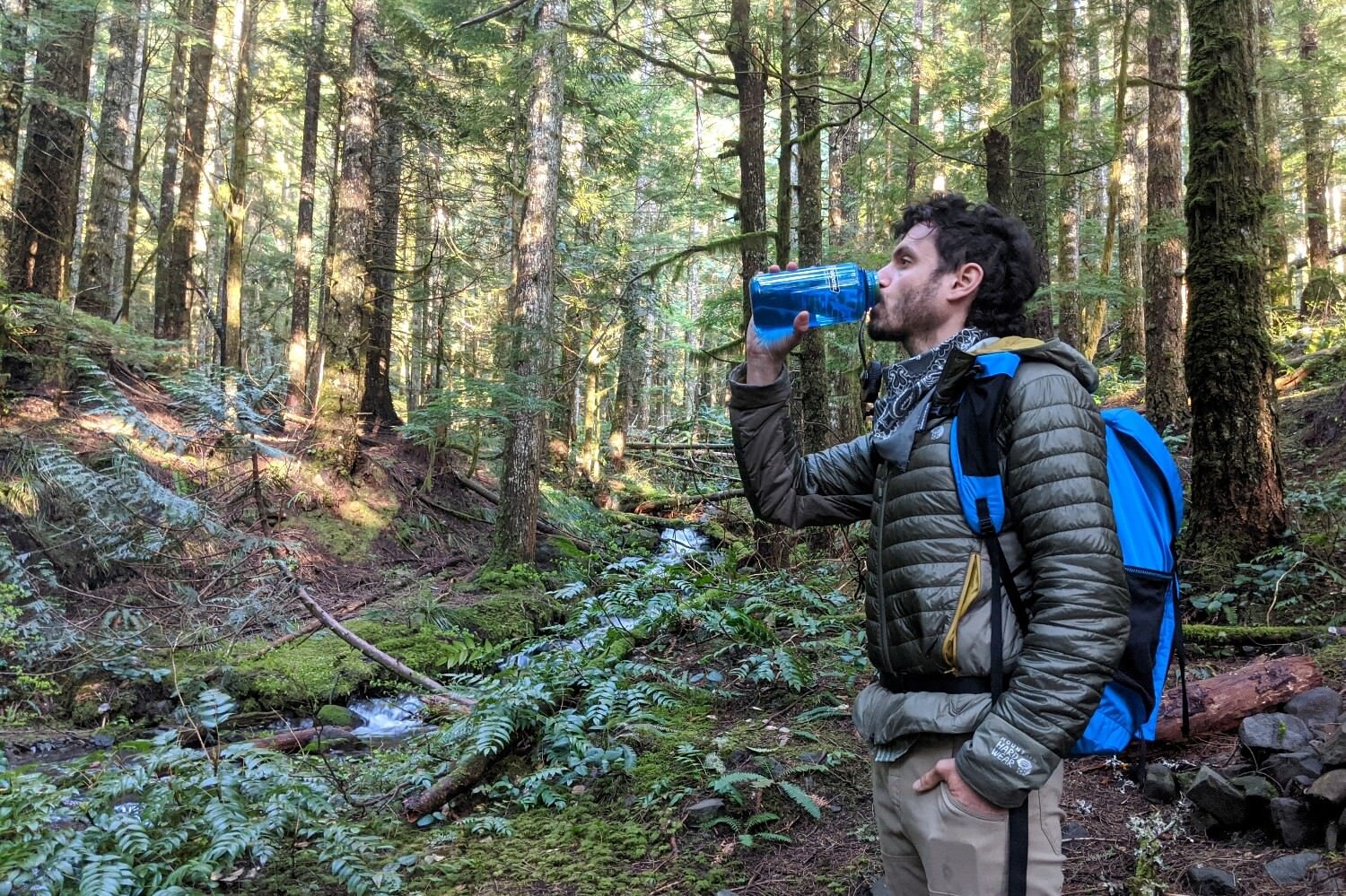
HIPBELT
A hipbelt’s primary function is to distribute the weight of your pack to your hips, to help alleviate strain on your shoulders. Many hip belts also feature convenient pockets, which provide easy access to items you’ll want readily available on the trail like snacks, sunscreen, lip balm, and your phone. Most minimalist daypacks forego hip belts in favor of a simpler nylon strap that still adds a bit of stability and weight transfer. Be sure to try on both types to determine which you prefer.
STERNUM STRAP
Sternum straps are included on almost all daypacks. They give you the option to connect your shoulder straps across your chest for a more secure carry and can help keep your bag from bouncing or swinging too much. It’s a nice touch when the sternum strap has an elastic section for a little give while moving, and the clip has an emergency whistle built in.
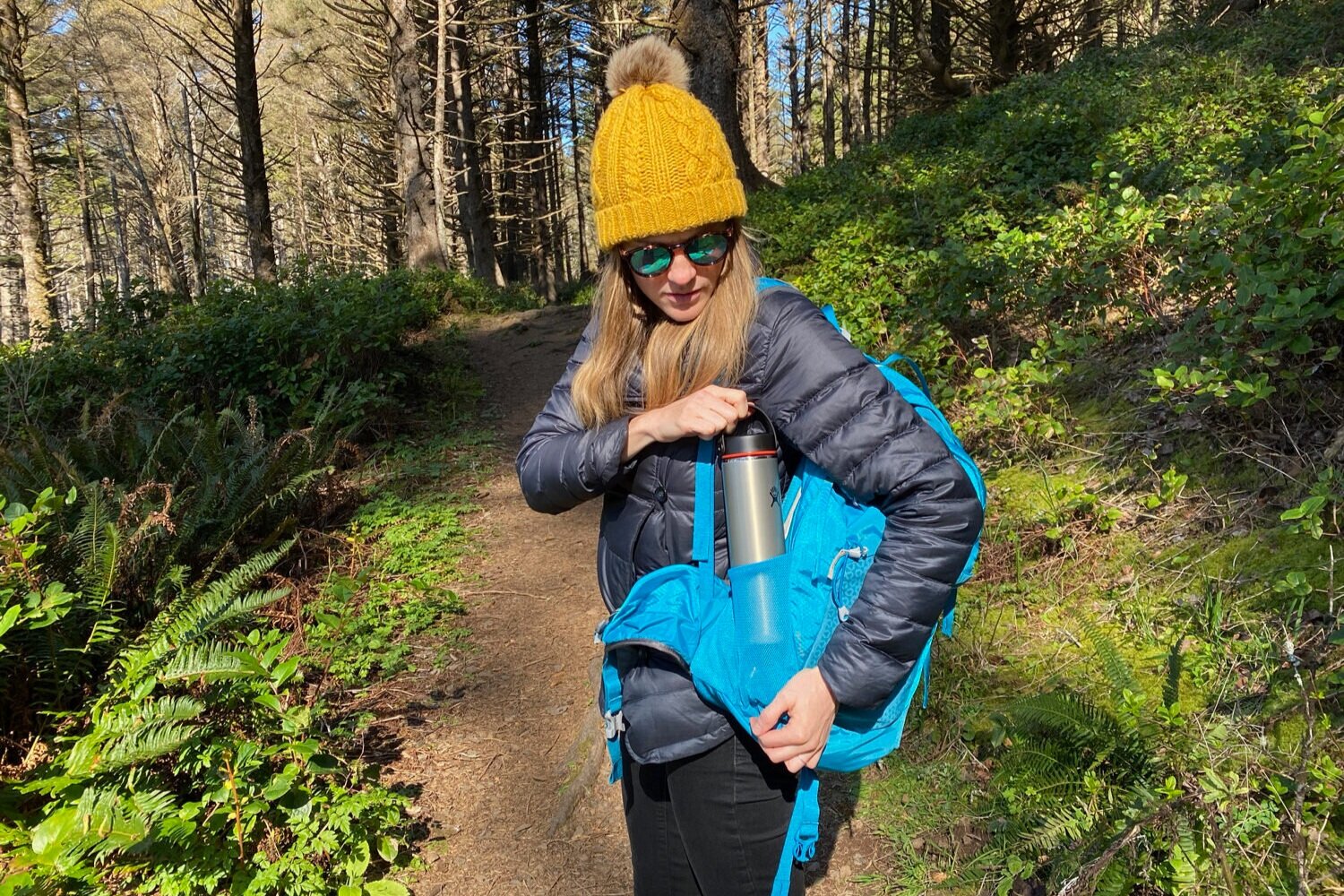
HYDRATION COMPATIBILITY
Water bottles and hydration bladders are the two most common ways to stay hydrated on the trail. If you prefer drinking from a reservoir, also known as a water bladder, make sure to get a daypack that has a hydration port to feed the tube through, and a reservoir pocket to hold the bladder. In general, we prefer the ease and convenience of water bottles, but a water bladder can be essential for extended time above treeline where long water carries can be necessary, or an easy day hike. We also have a great list of the best hydration packs if you’re looking for a daypack that comes with an included hydration system.
WATER BOTTLE HOLSTERS
Hydration is key while hiking, so if you’re not using a hydration bladder, your water bottles should always be easy to access from your side pockets. Some minimalist ultralight packs don’t have water bottle pockets which is far less convenient in our opinion. That’s why every backpack on this list has water bottle holsters for ease of use.
WATERPROOFING
Most daypacks don’t offer much water protection on their own. Your pack will likely shed a light drizzle and morning mist with no problem, but water will eventually seep through your backpack’s seams and work its way into your gear with prolonged exposure. Some daypacks come with pack covers included but they will eventually wet out in heavy rain too.
We recommend packing your gear in waterproof stuff sacks or Ziploc bags inside your pack. You can also line the inside of your backpack with a strong trash bag to keep all your stuff dry. Even when a daypack truly is waterproof, we’ve learned it doesn’t stay that way for long, so we still play it safe and bag up our most important gear when the skies are darkening with rain clouds.
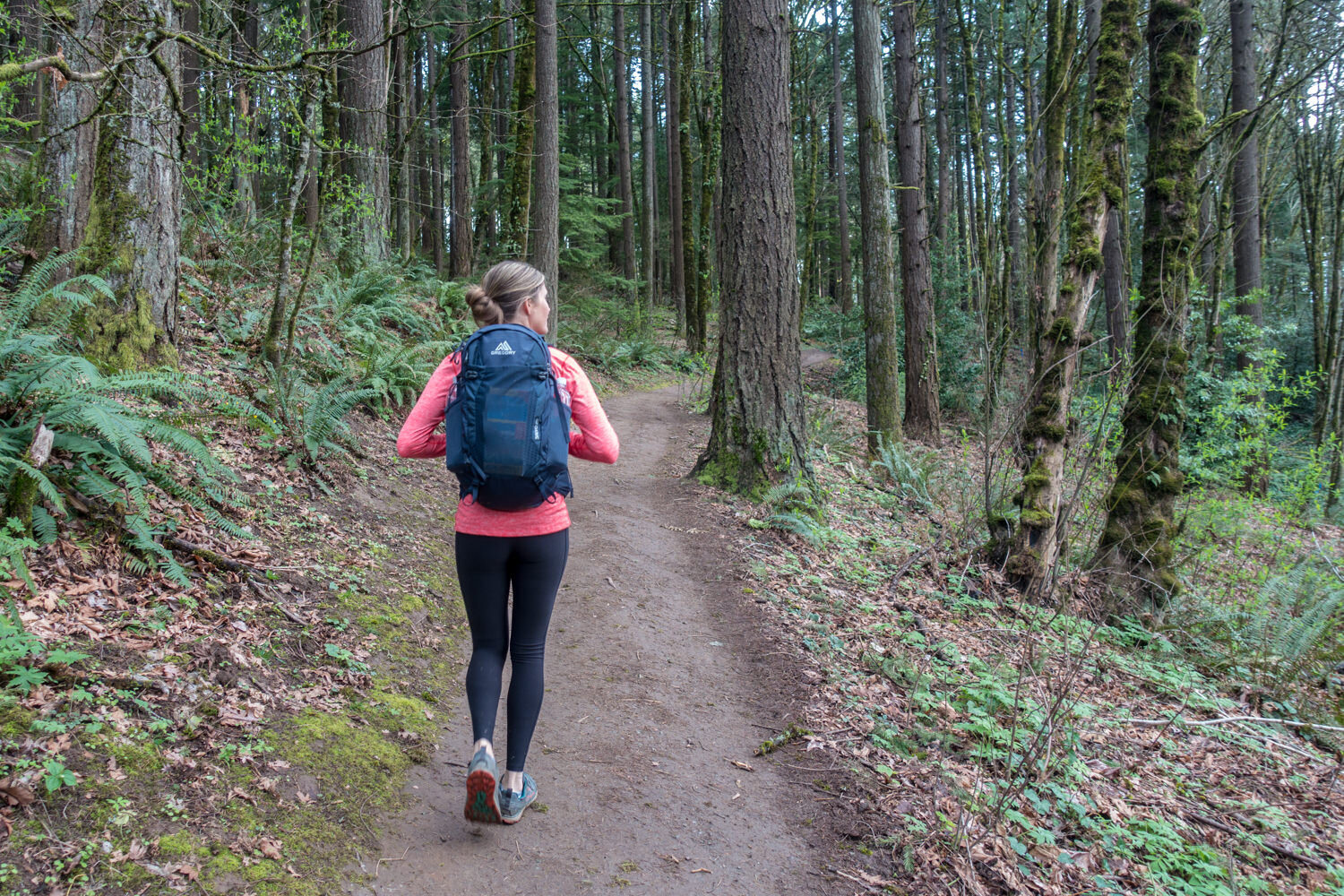
CONCLUSION
An affordable, easy-to-use, and low-weight day pack is essential for a comfortable and fun hike. Whether you’re walking the dog on the local trails or taking on a mountain summit, a quality daypack can make or break your next hike. We hope this guide helped you find the perfect bag for your next adventure so you can pack up and hit the trails.



